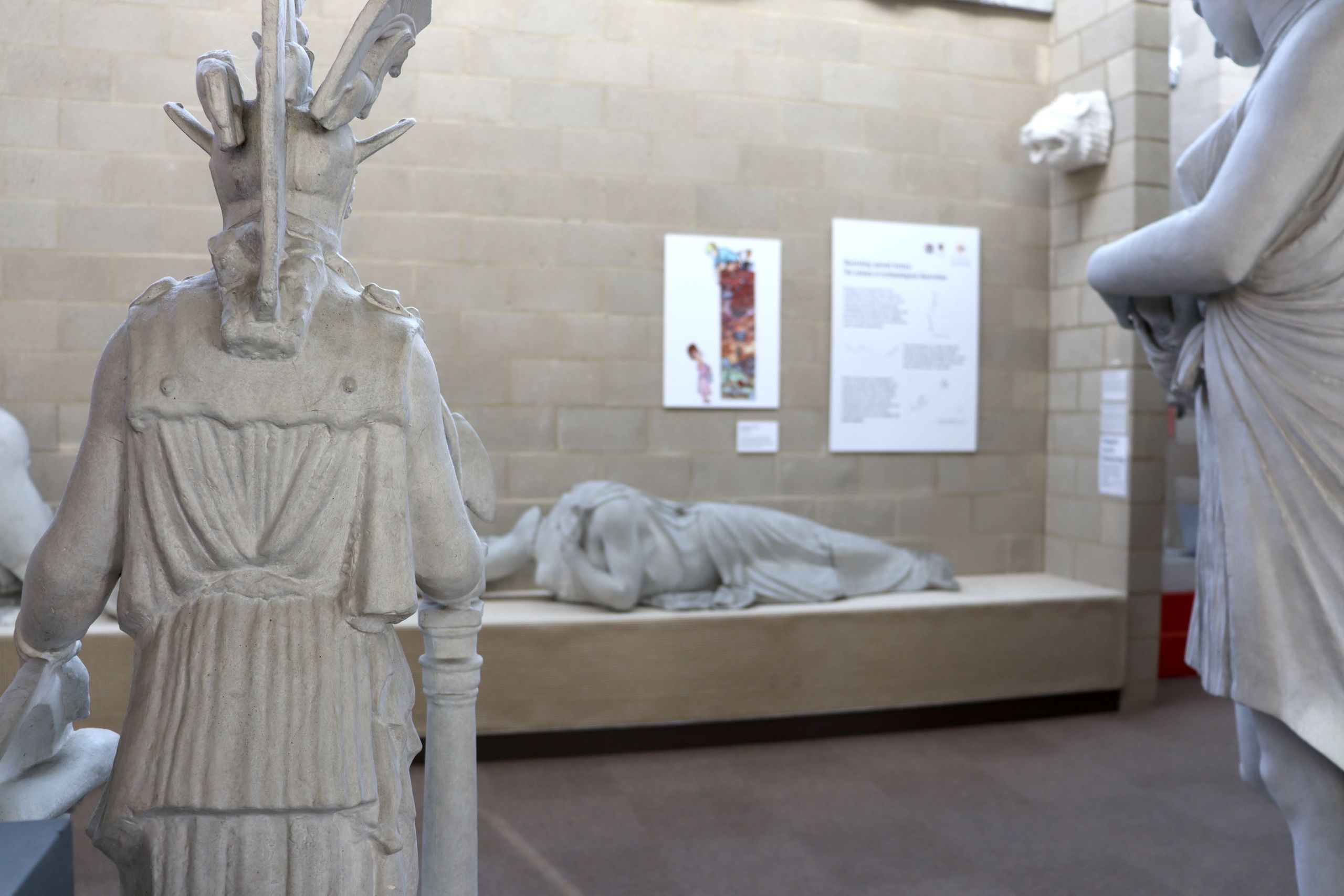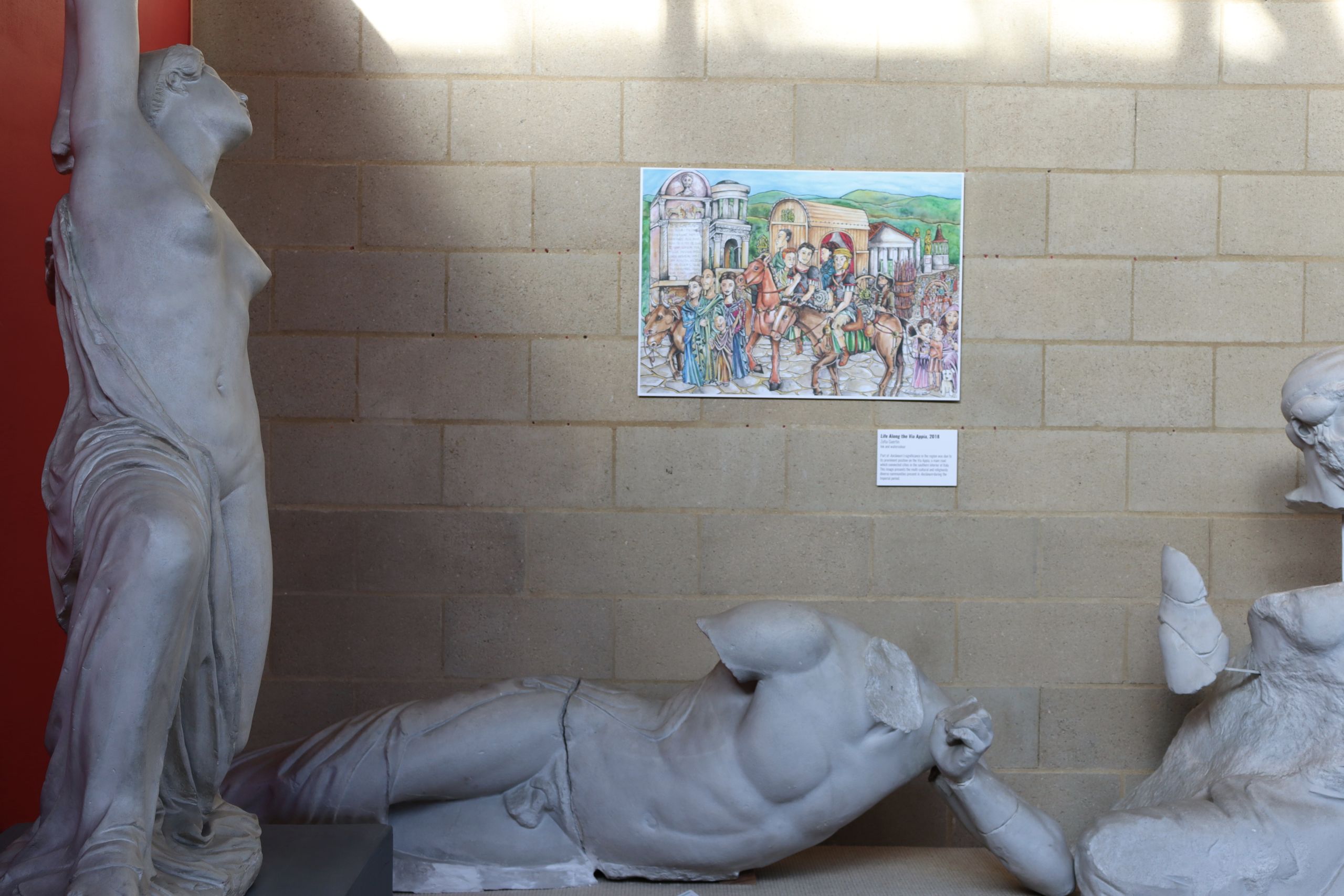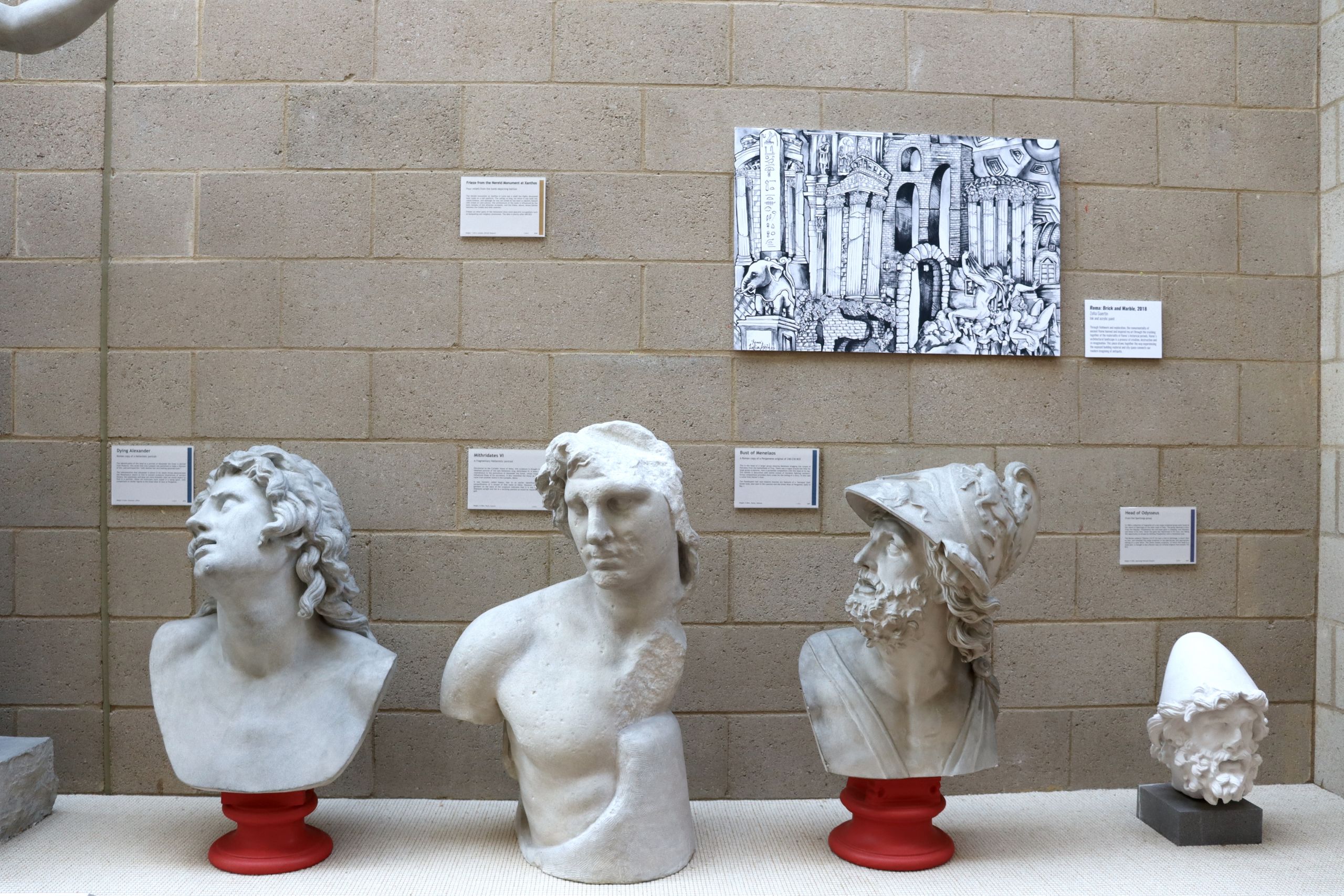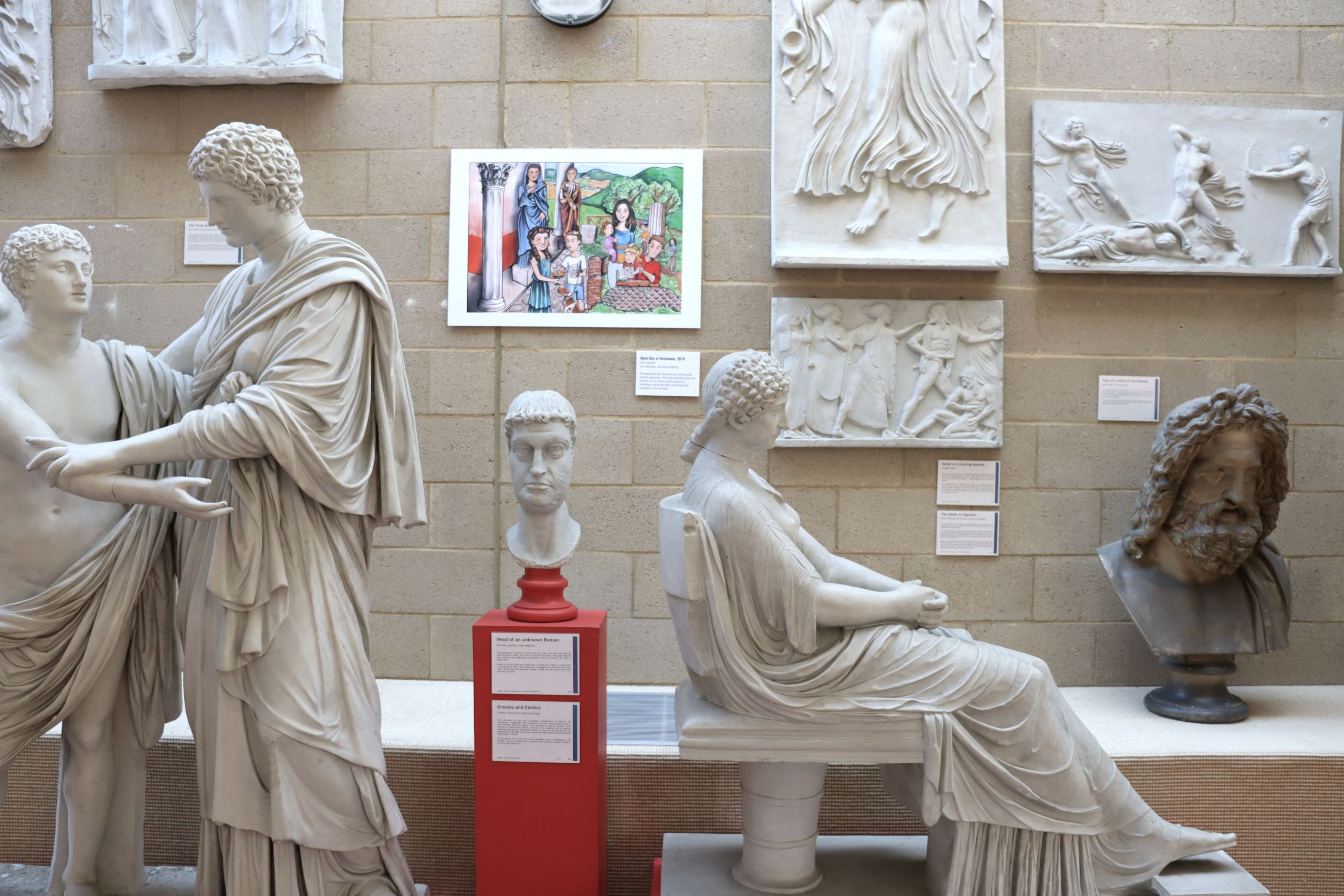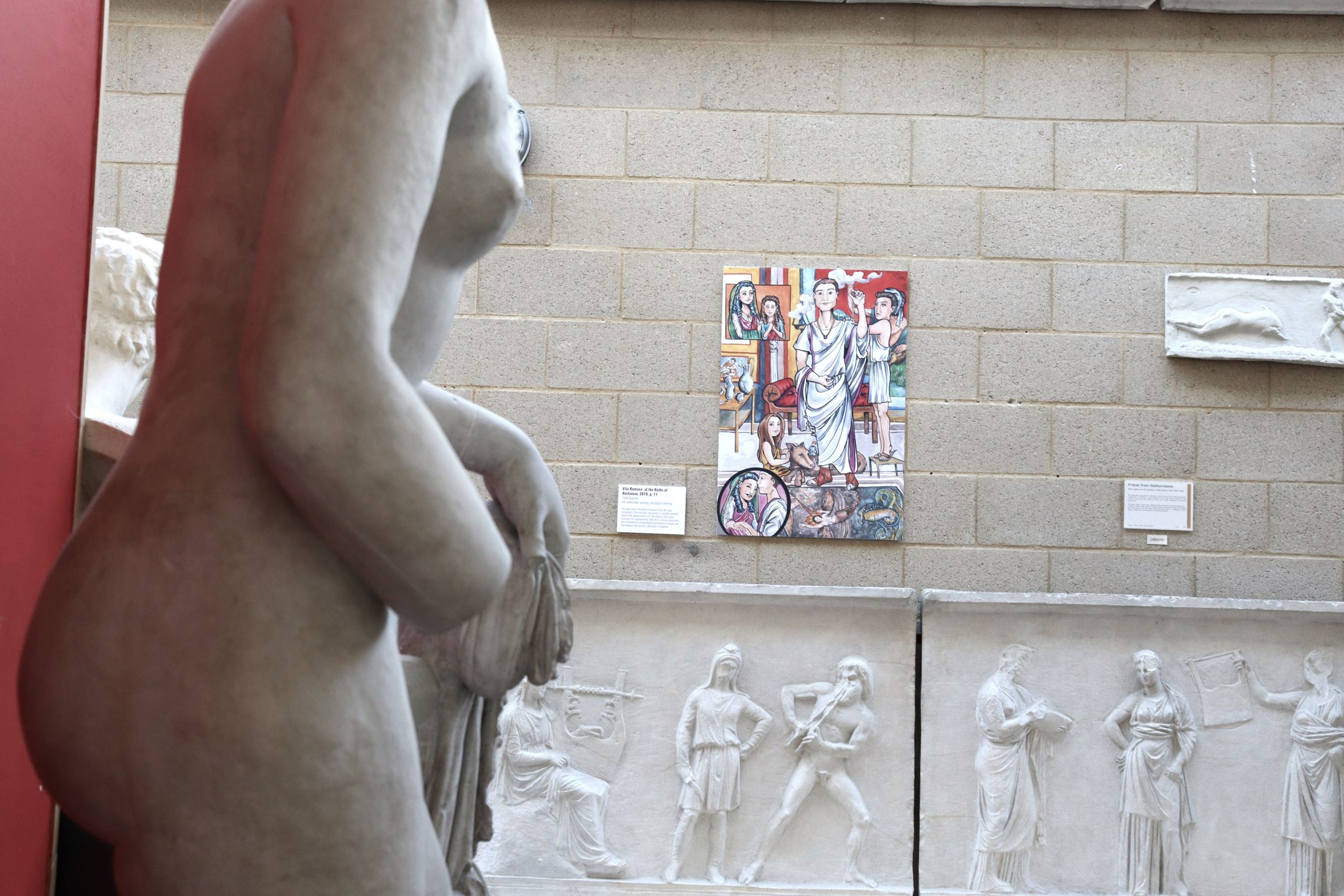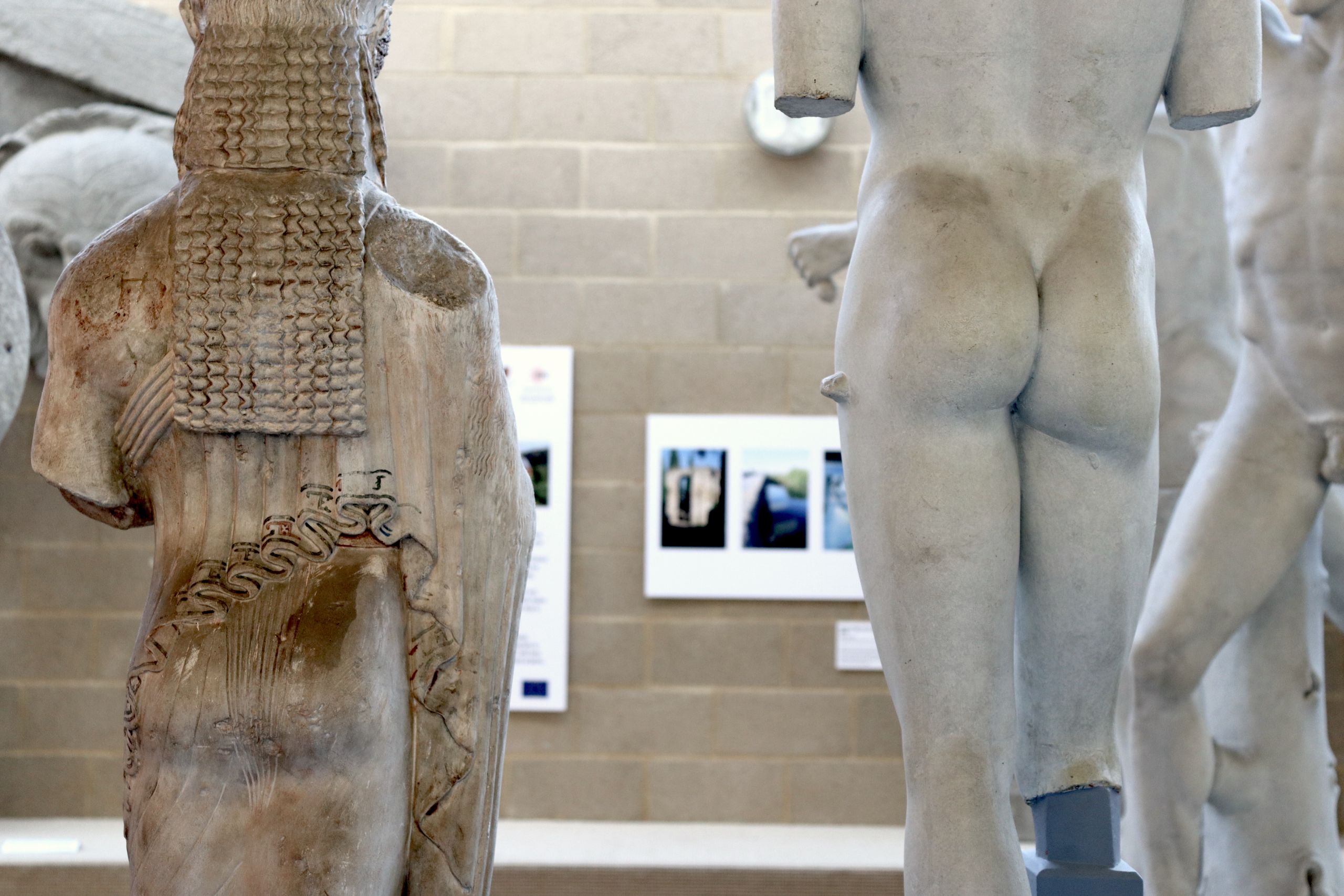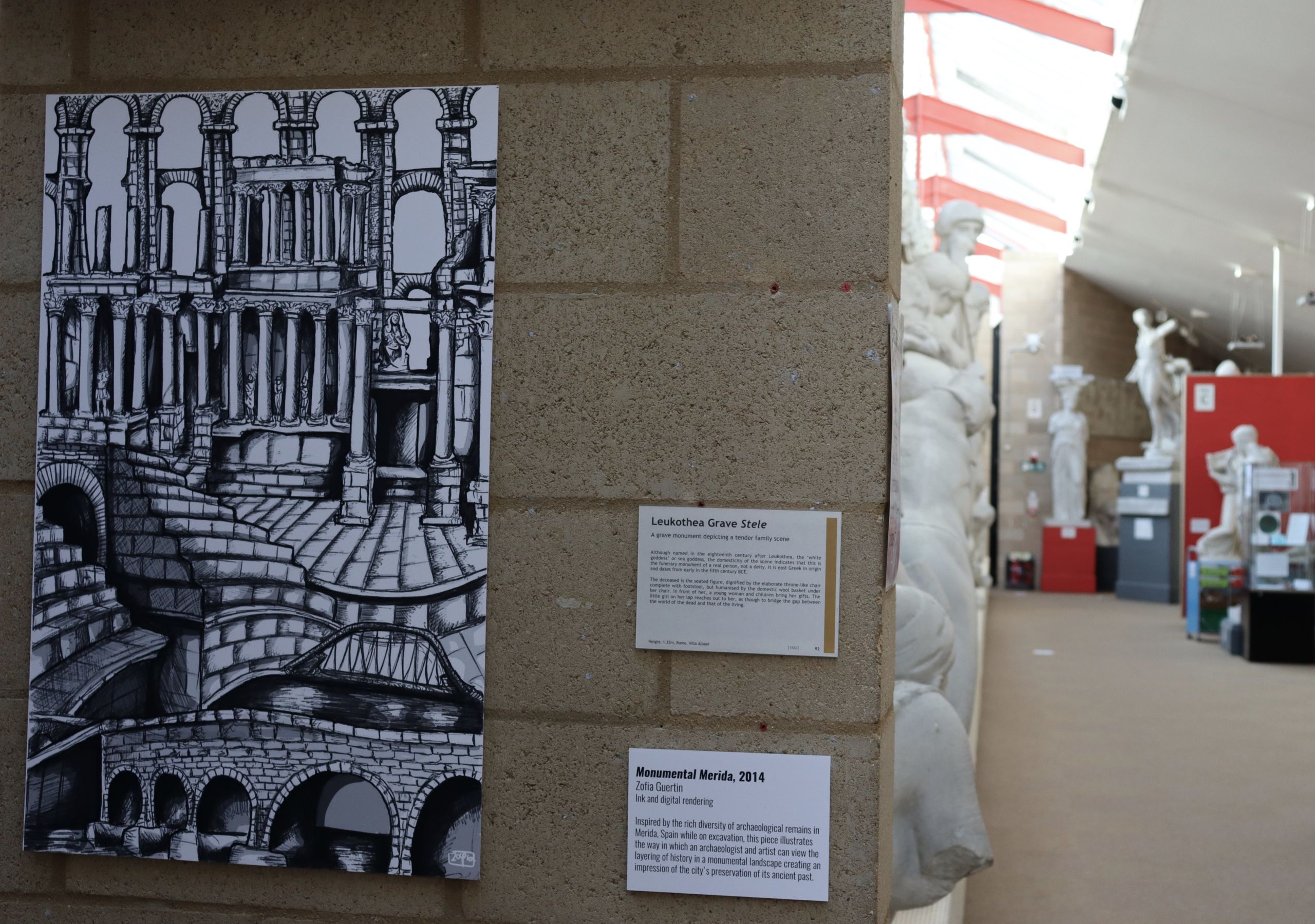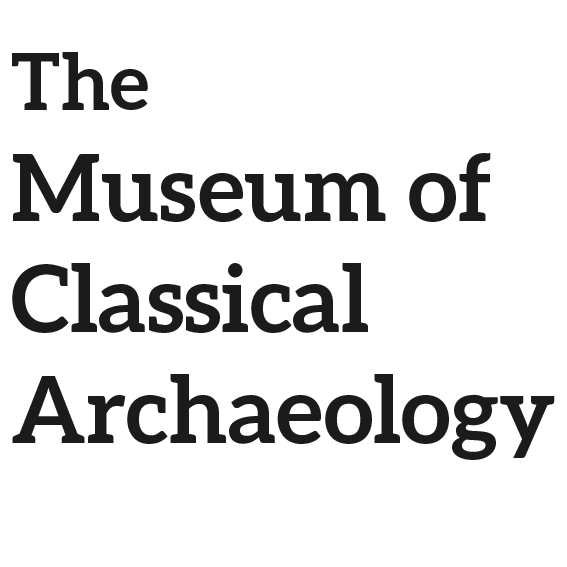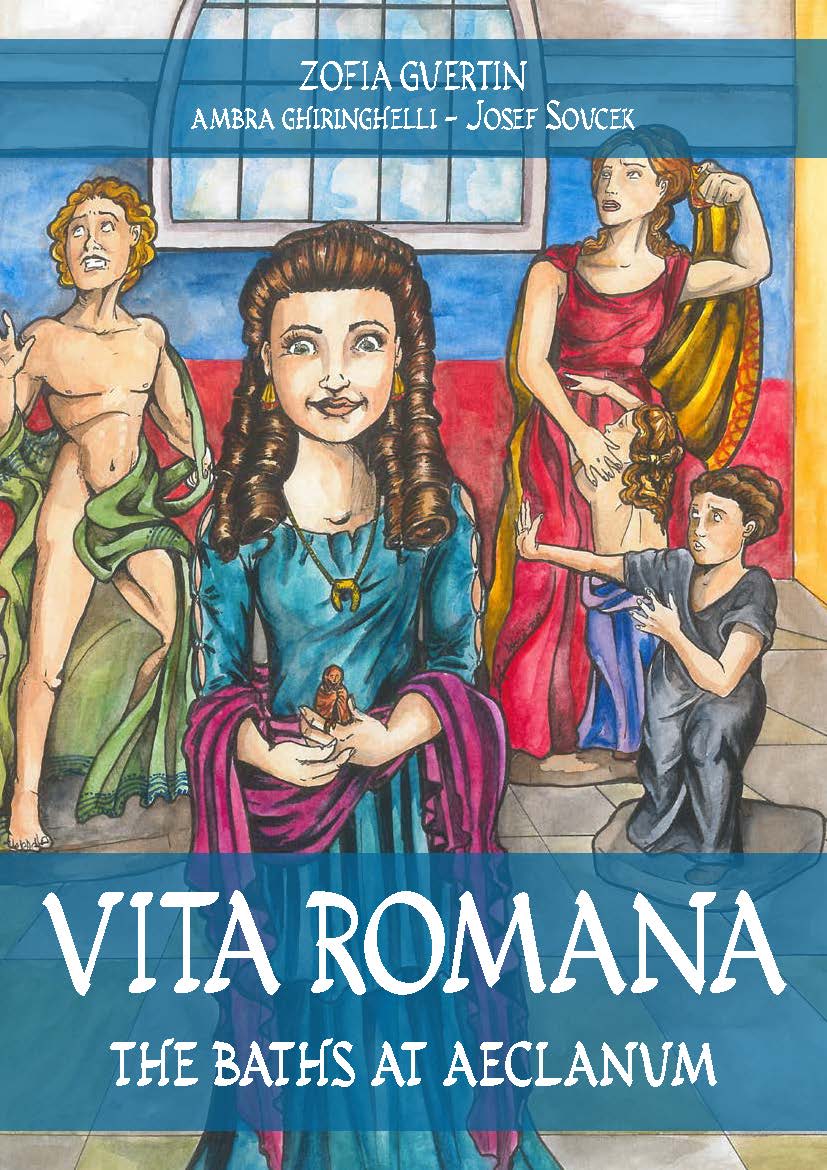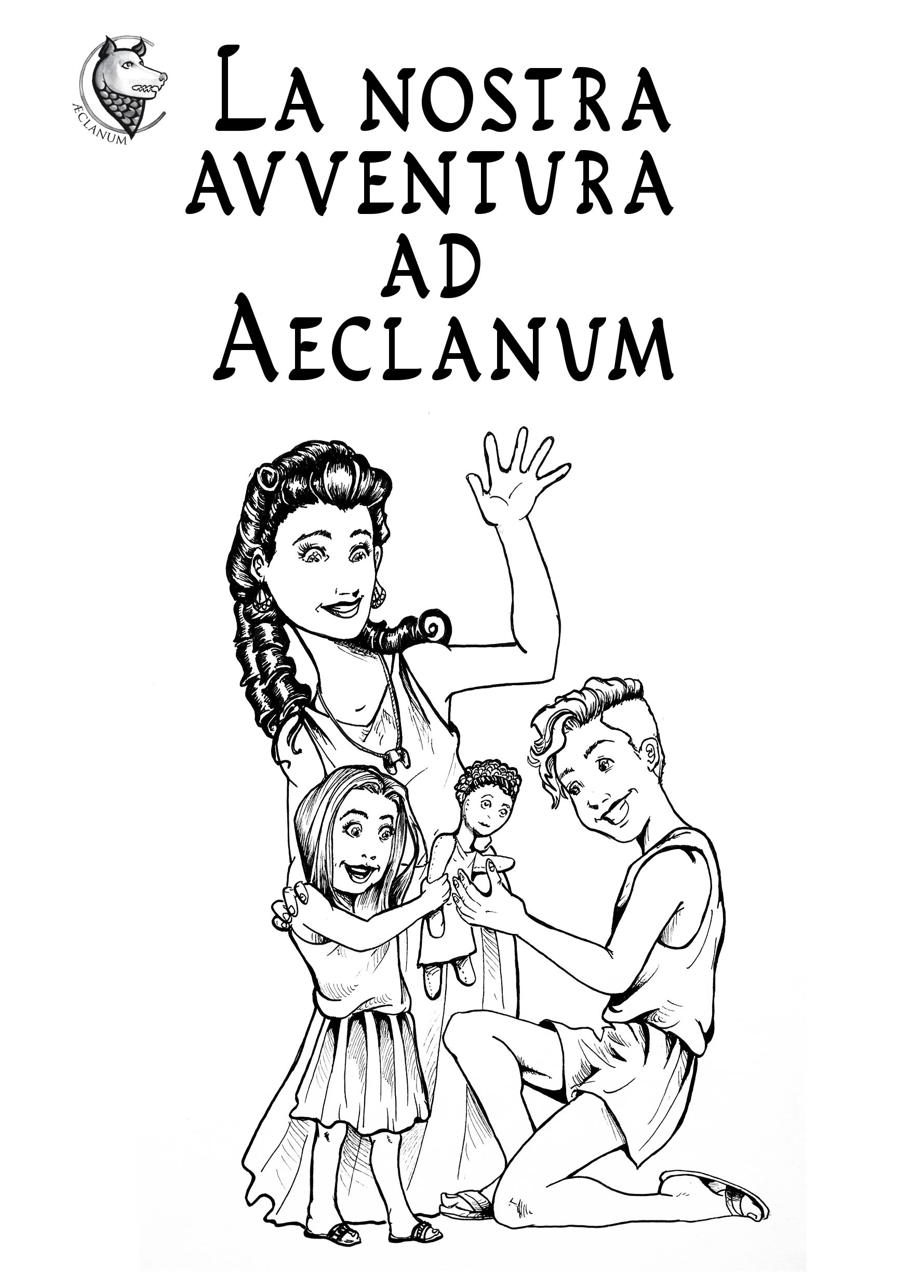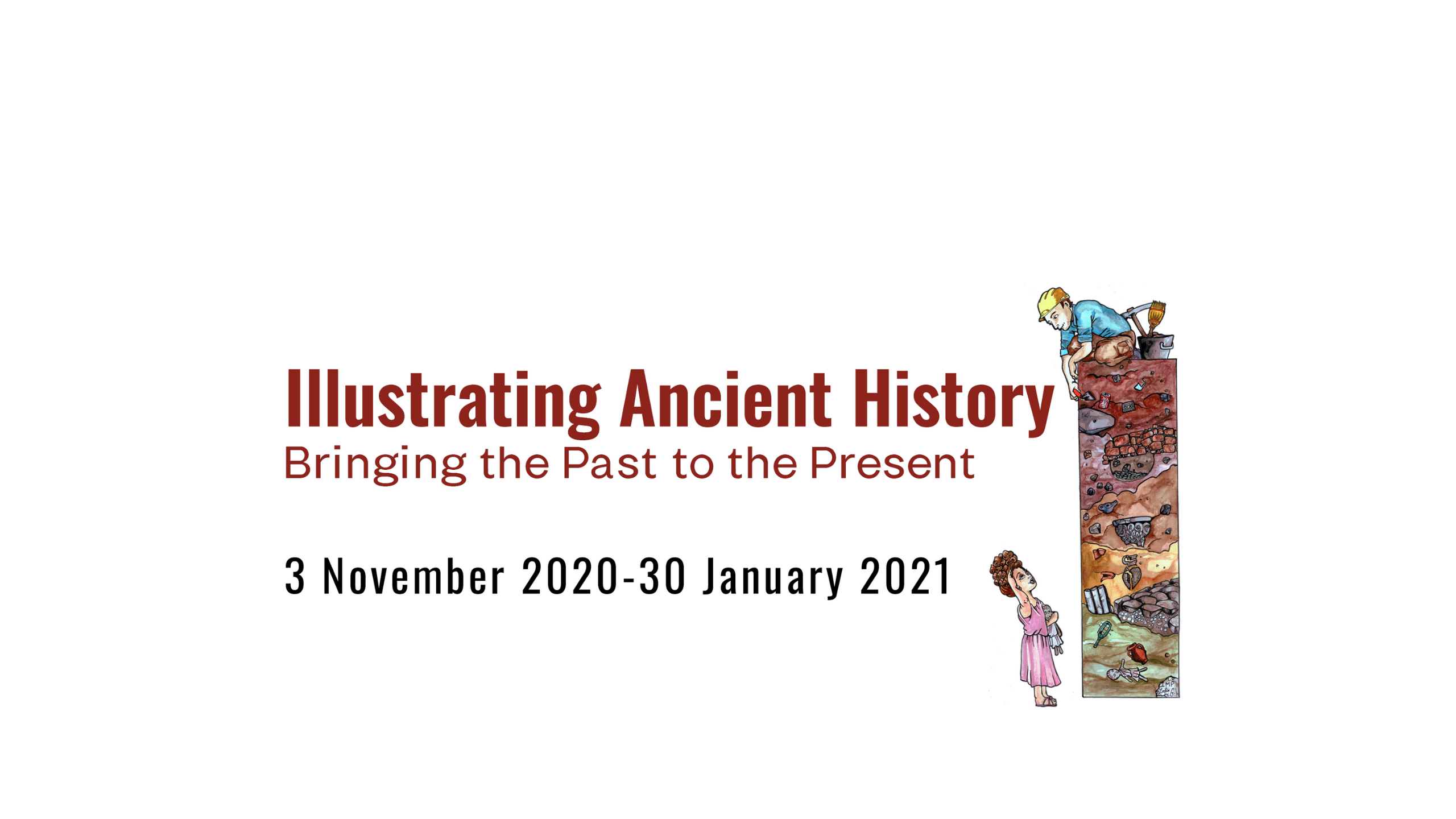

Archaeologists play a very important role as intermediaries between the past and the public. They explain buried remains (which are often illegible to the untrained eye!) in a manner which is relatable and can be understood. Images are essential to this process.
As an interpreter, the archaeologist has certain responsibilities. The past leaves its traces as historical layers, which include both buildings and buried remains. A place can have many pasts with multiple meanings. For example, the nineteenth-century statue honouring Edward Colston (1636-1731) represents a past which society has celebrated and condemned in different periods. Choosing to preserve and explore one layer over another is always a conscious decision which shapes our understanding of the past. Images can help to convey these complexities.
Local communities and local archaeology, Monuments and other historical landmarks define local communities as much as they define landscapes. They form a connection with the past that underlines the particular history and character of a place and its inhabitants. Nowadays, attention is paid to archaeological remains which means that new elements of the local past are now visible and accessible to the community. However, there is always the chance that archaeologists and the public may have different expectations as to what is a defining element of the local past.
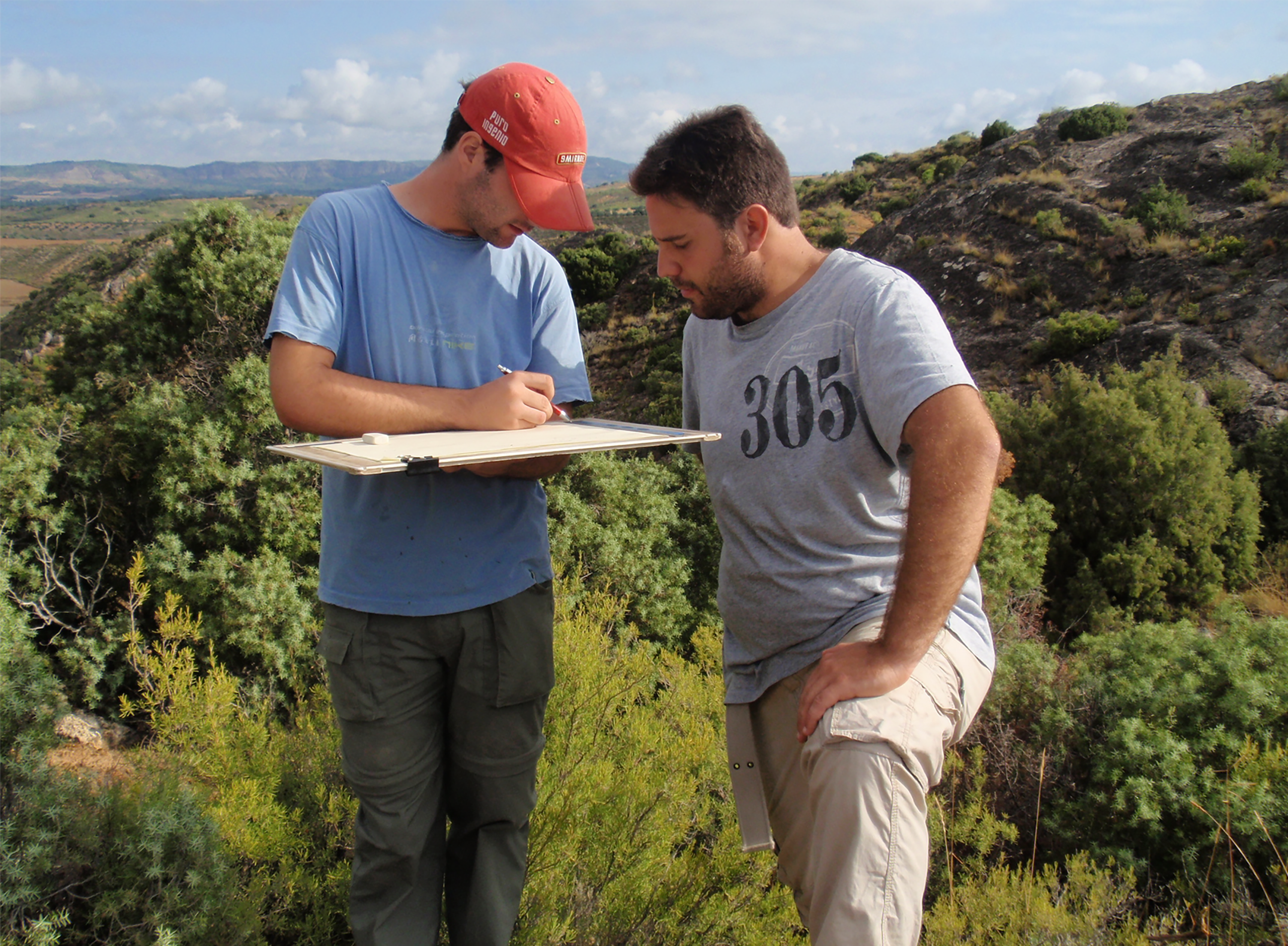
Archaeological drawing in the field, Reccopolis aqueduct survey, 2010. Copyright: Javier Martínez
Archaeological drawing in the field, Reccopolis aqueduct survey, 2010. Copyright: Javier Martínez
This exhibition explores the role which illustrations play in the interaction between archaeologists and the general public and how archaeological remains are important to local communities. Archaeologists are trained to understand monuments and buried remains, but the public will always benefit from extra visual aids in order to appreciate them. The display includes images by artists and archaeologists who have engaged with the past through drawing, either as part of commissioned outreach projects, or on-site visits.
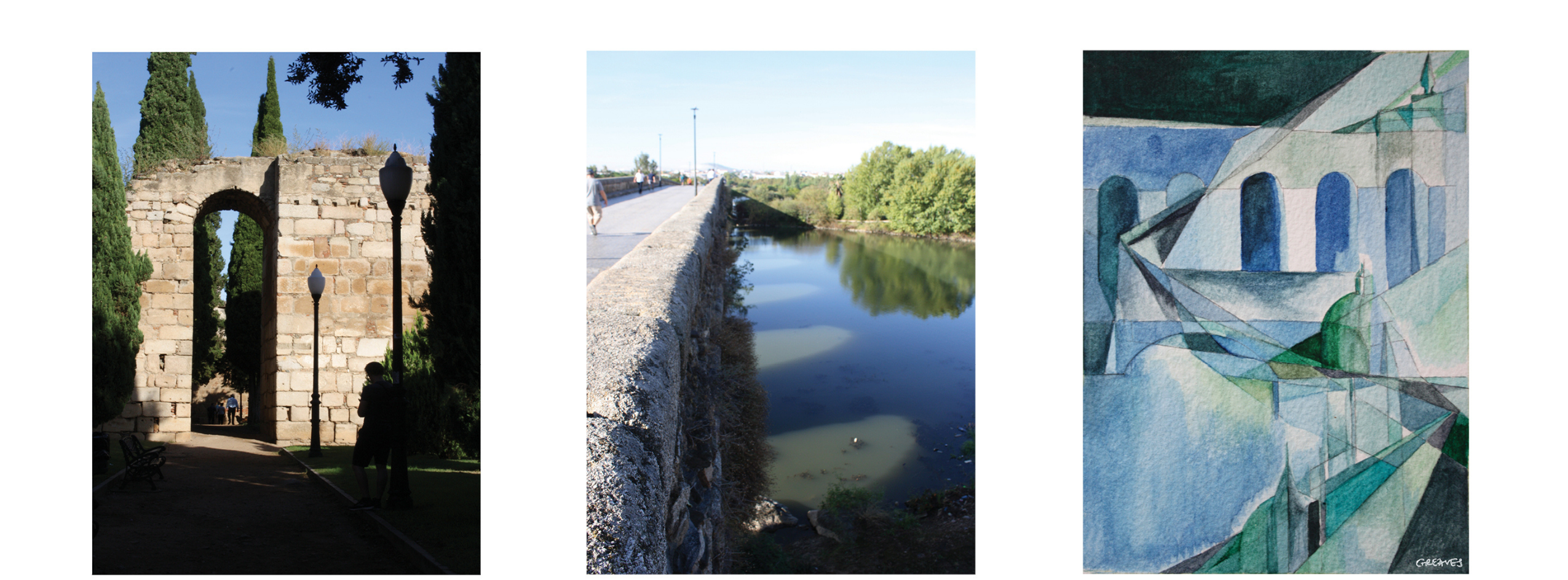
Copyright: Sofia Greaves
Copyright: Sofia Greaves
Roman bridge and citadel, Mérida, 2018
Sofia Greaves
Photograph and watercolour sketch
Mérida has both a Roman and Islamic past. During the Umayyad rule, Roman structures were transformed and reused, particularly the bridge and citadel. This small sketch explored processes of erasure, diffraction and alteration in urban landscapes.
The Science of Archaeological Illustration
Drawings are an important part of archaeological recording. These range from sketches done by excavators on site to precise scaled plans and sections. Drawings give archaeologists the opportunity to understand and assess their excavation after digging. They are the basis for the plans and illustrations used in scientific publications.
Plans and sections use linear scales and symbols. Artistic reconstructions include elements like plants and people to give a sense of scale and perspective, colours and textures. These make the image ‘come alive’.
Artistic impressions of archaeological remains are always more evocative than technical drawings. Artists can highlight elements from a site which an excavator might not focus on. Artists work with archaeologists to produce illustrations and reconstructions which are based on scientific data but are more relatable and understandable.
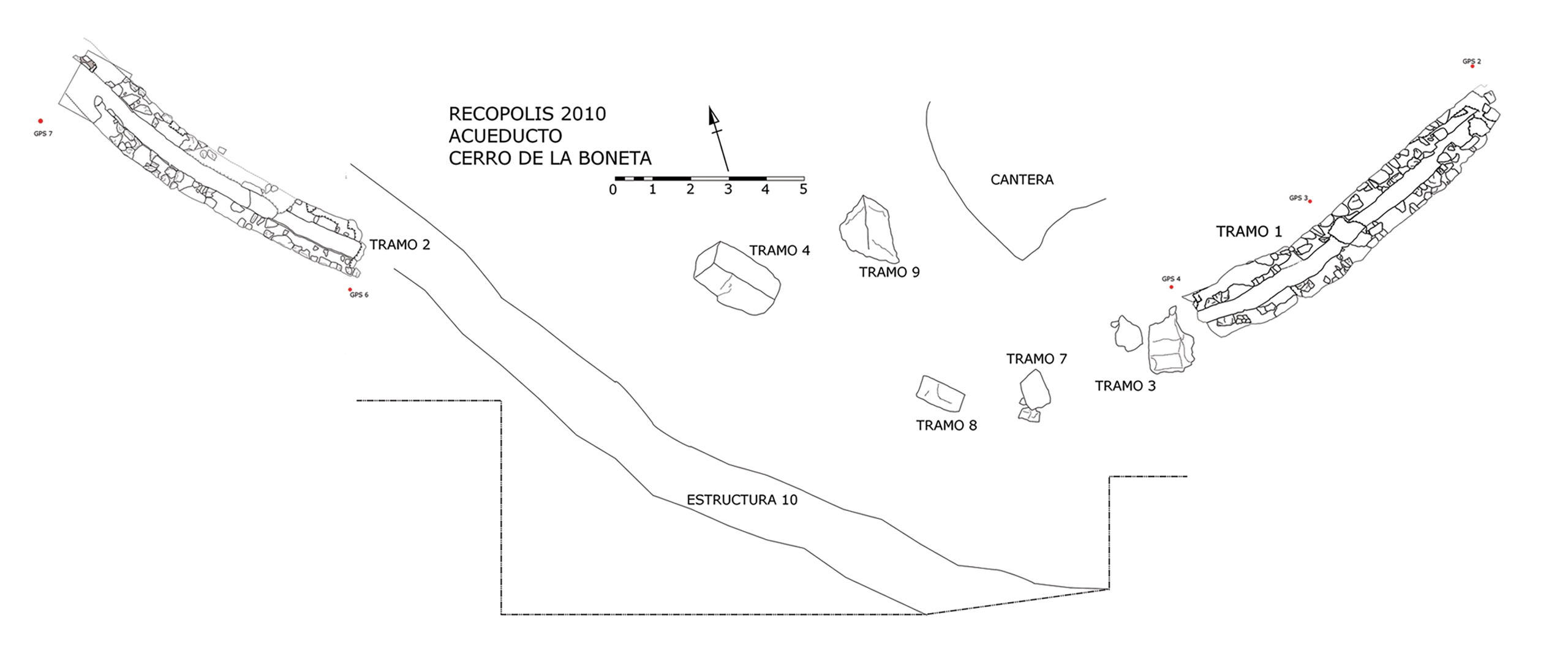
Plan of remains at Boneta 1, Reccopolis aqueduct survey, 2010. Copyright Javier Martínez
Plan of remains at Boneta 1, Reccopolis aqueduct survey, 2010. Copyright Javier Martínez
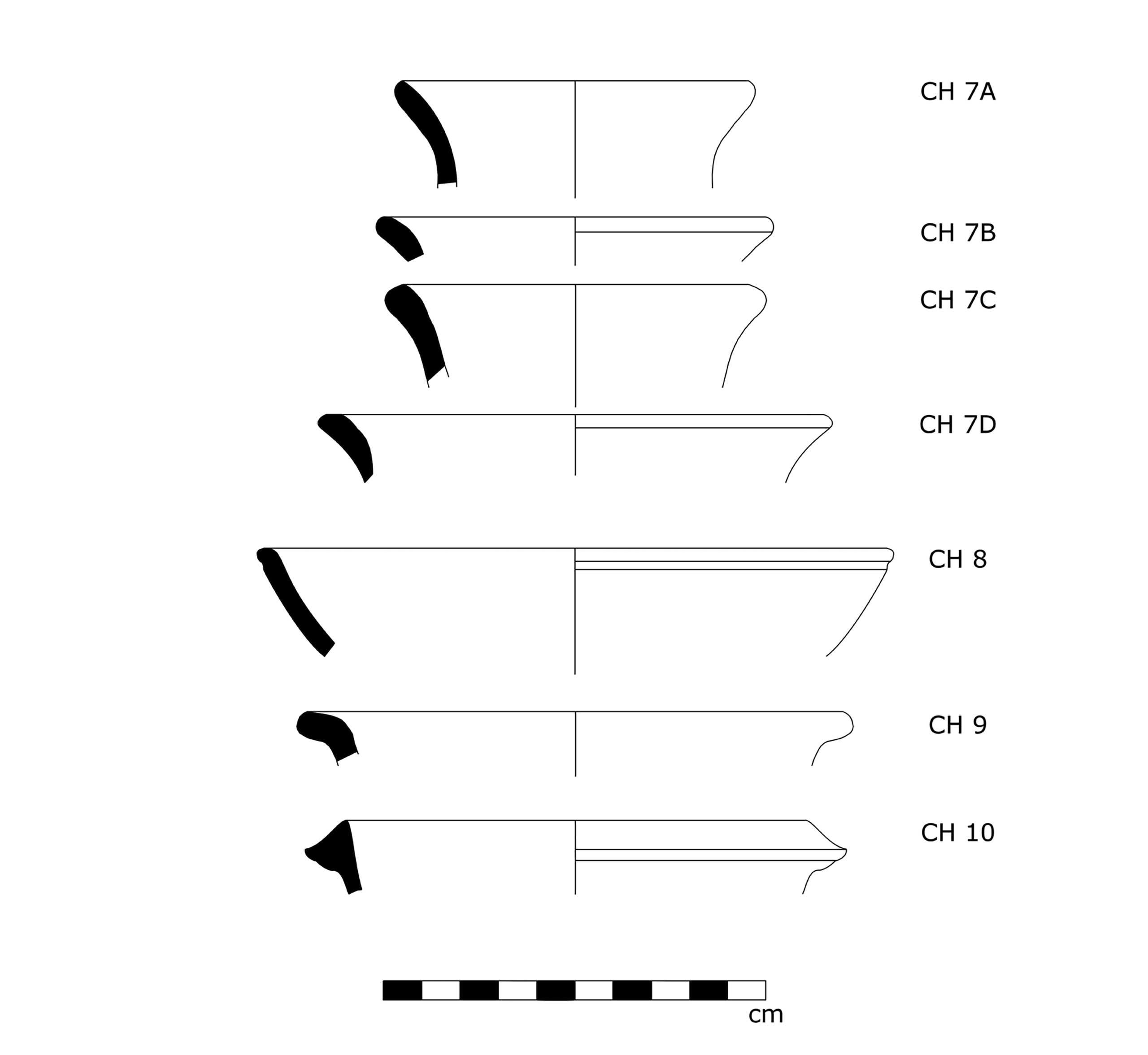
Pottery typologies, Casa Herrera excavations. Copyright Javier Martínez
Pottery typologies, Casa Herrera excavations. Copyright Javier Martínez

Pottery typologies, Casa Herrera excavations. Copyright Javier Martínez
Pottery typologies, Casa Herrera excavations. Copyright Javier Martínez
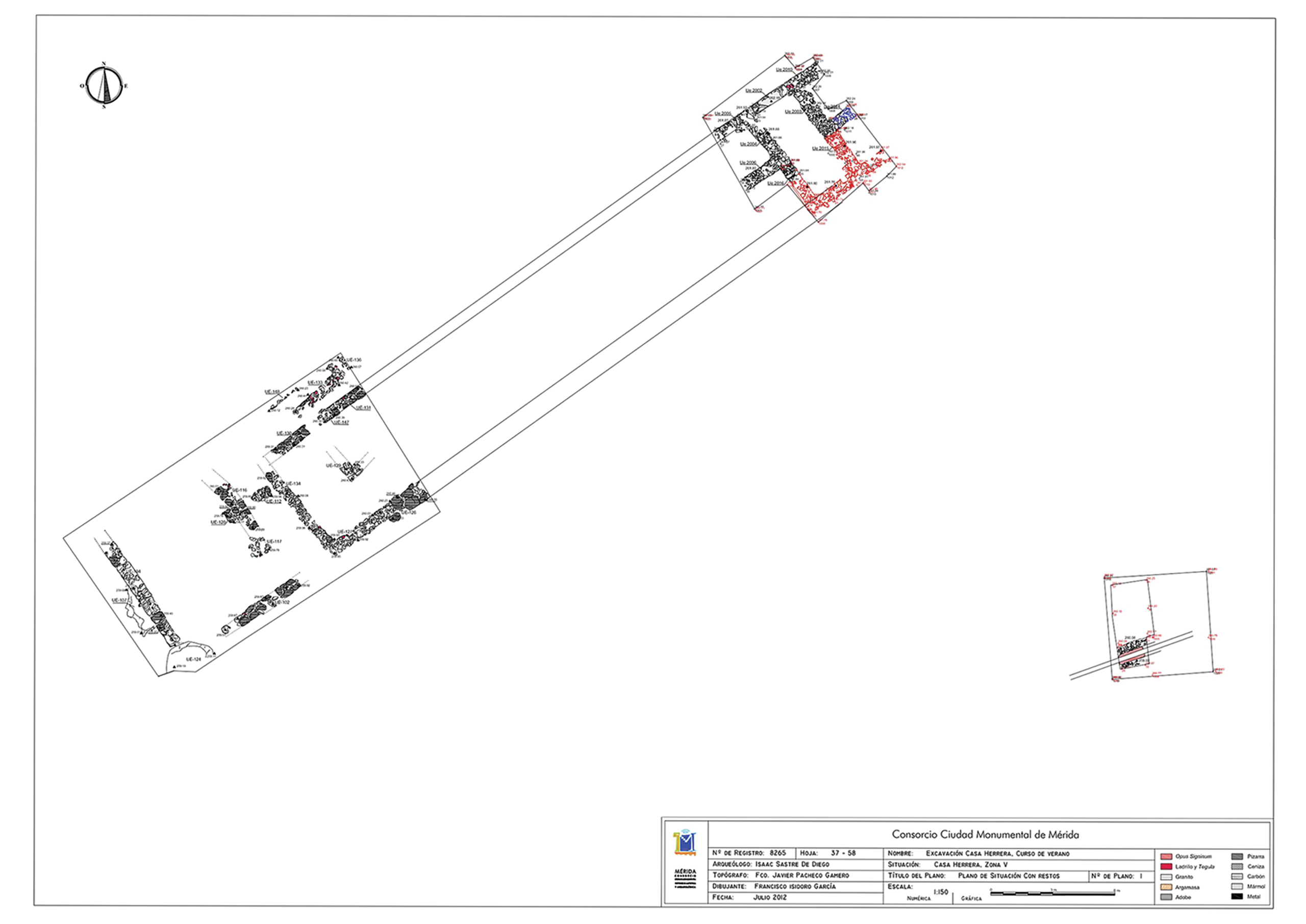
Plan of the unearthed remains at Casa Herrera. Copyright Isaac Sastre & Javier Martínez
Plan of the unearthed remains at Casa Herrera. Copyright Isaac Sastre & Javier Martínez
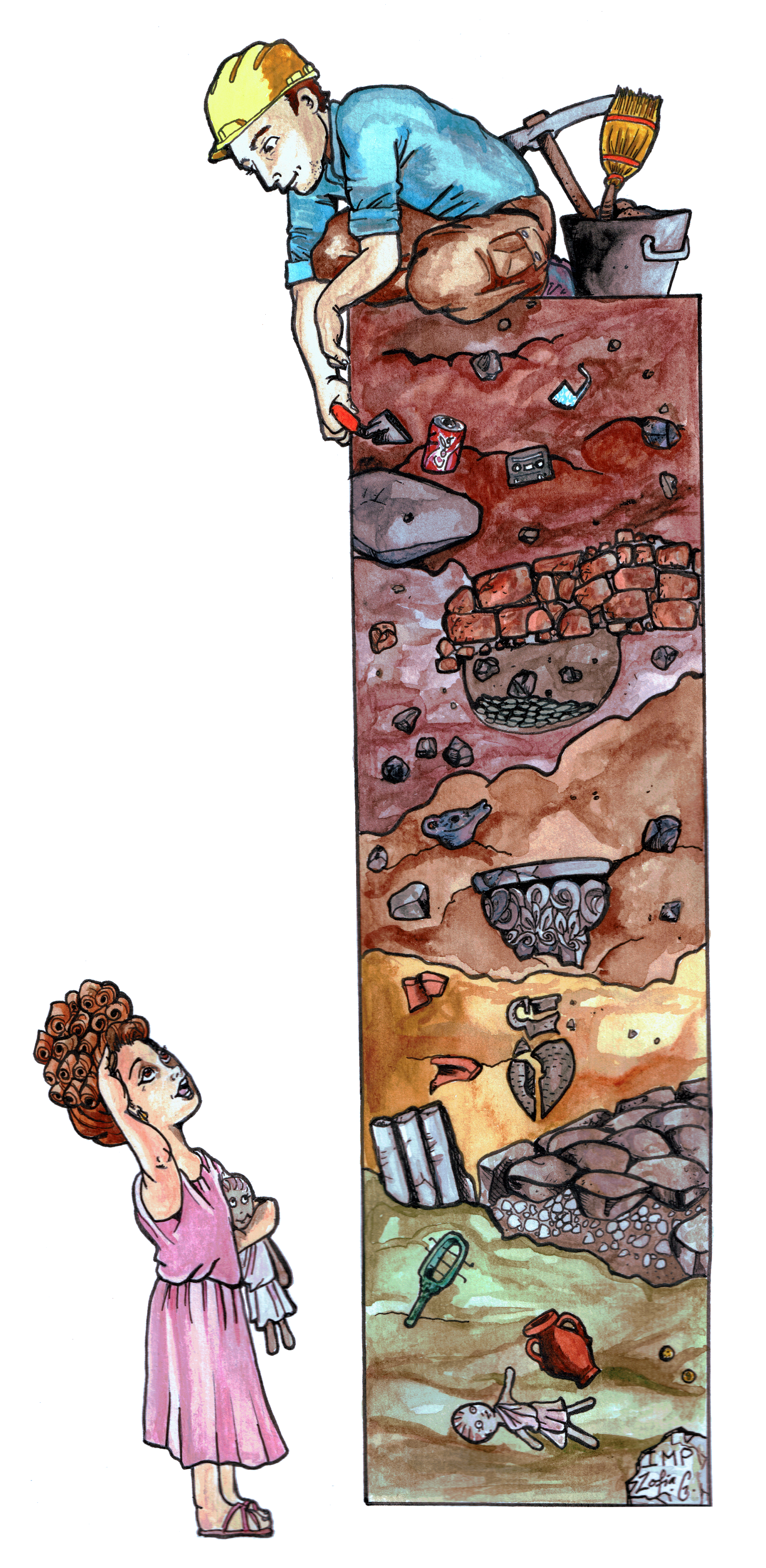
Copyright: Zofia Guertin
Copyright: Zofia Guertin
Stratigraphy, 2018
Zofia
Guertin
Ink and watercolour
The historic events on a site can be challenging to explain. This image illustrates how the newest archaeological finds are the closest to the surface and shows how the further down we go, the closer we are brought to people in the ancient past.
Illustrations for and by Archaeologists
In order to represent archaeological objects in a way which is standard across the discipline, and to do so in a way that can be reproduced in print (line art), archaeologists use technical, scaled drawings. These hand-drawings allow archaeologists to highlight the details that they consider important and relevant for interpretative and comparison purposes.
Pencil drawings are later inked and, in some cases, coloured. However, nowadays hand drawings are mostly (but not entirely) replaced by digital modelling, using photogrammetry to generate 3D images that can be then turned into 2D line art.
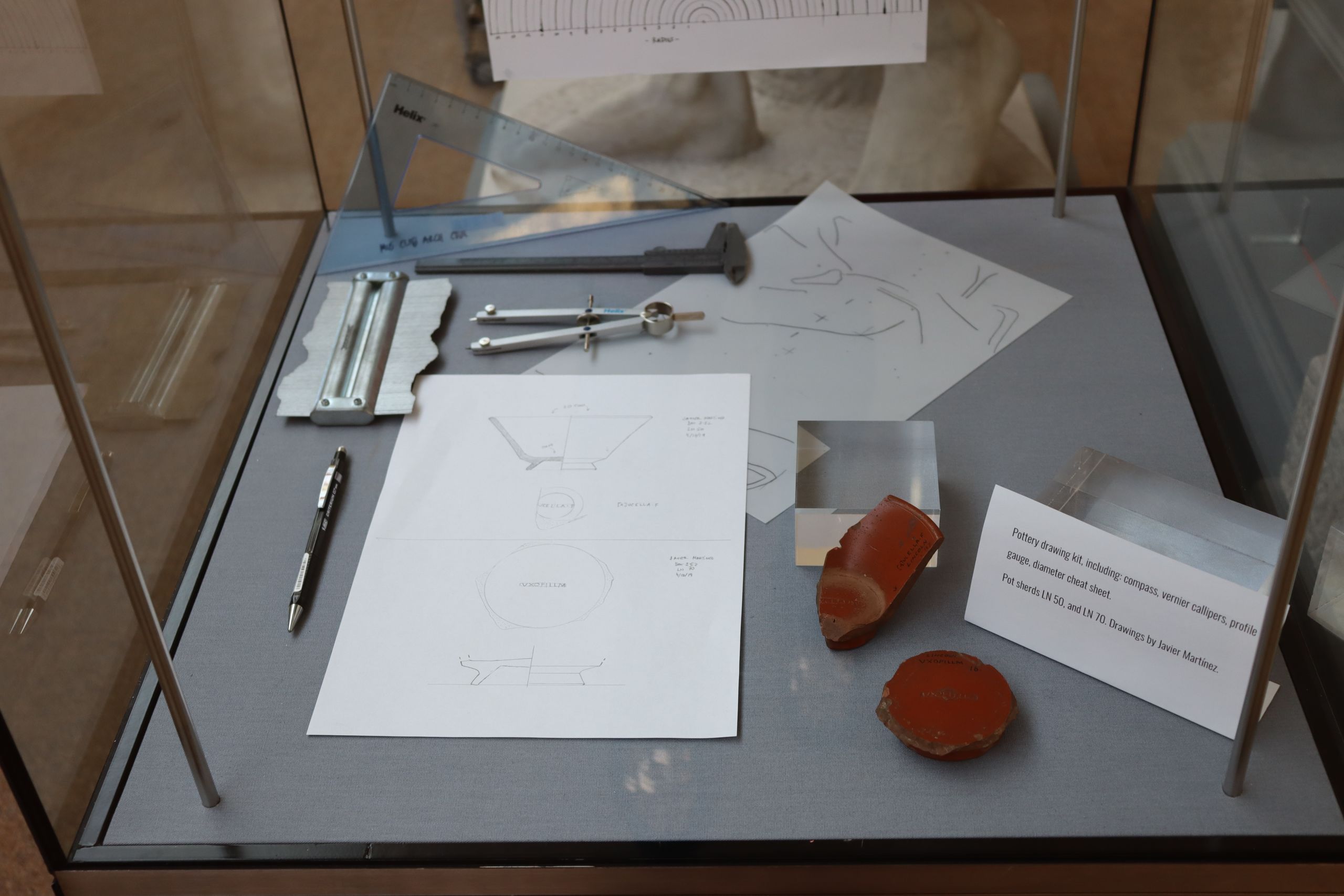
Pottery drawing kit, including: compass, vernier callipers, profile gauge, diameter cheat sheet. Drawings by Javier Martínez Jiménez. Copyright: Museum of Classical Archaeology
Pottery drawing kit, including: compass, vernier callipers, profile gauge, diameter cheat sheet. Drawings by Javier Martínez Jiménez. Copyright: Museum of Classical Archaeology
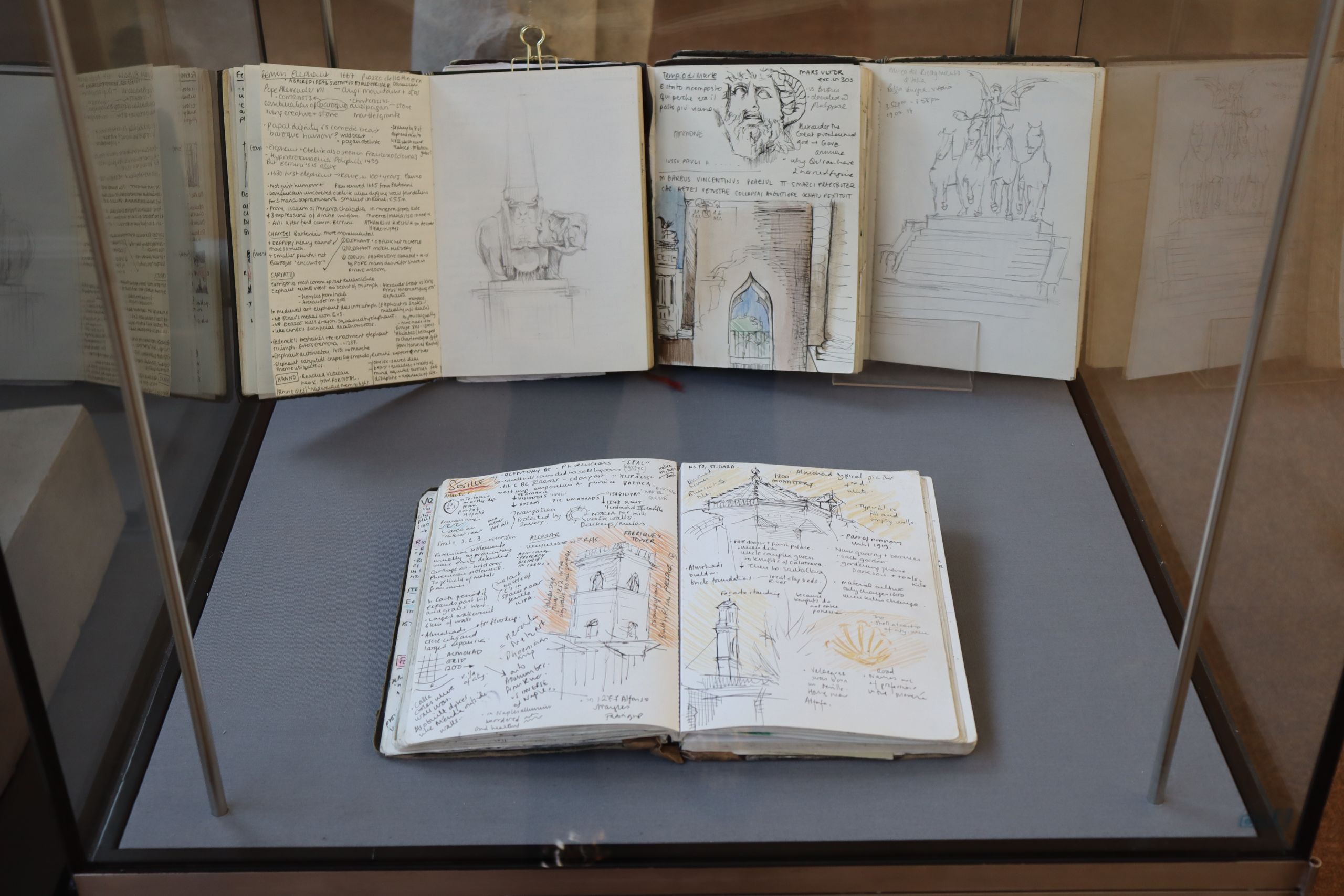
Copyright: Sofia Greaves
Copyright: Sofia Greaves
Sketchbooks, 2014 -2019
Sofia Greaves
Sketching enables me to look closely at archaeological remains, to see structural relationships and capture the character of a place. These are some examples from travel sketchbooks.
Monumental Merida, 2014
Zofia
Guertin
Ink and digital rendering
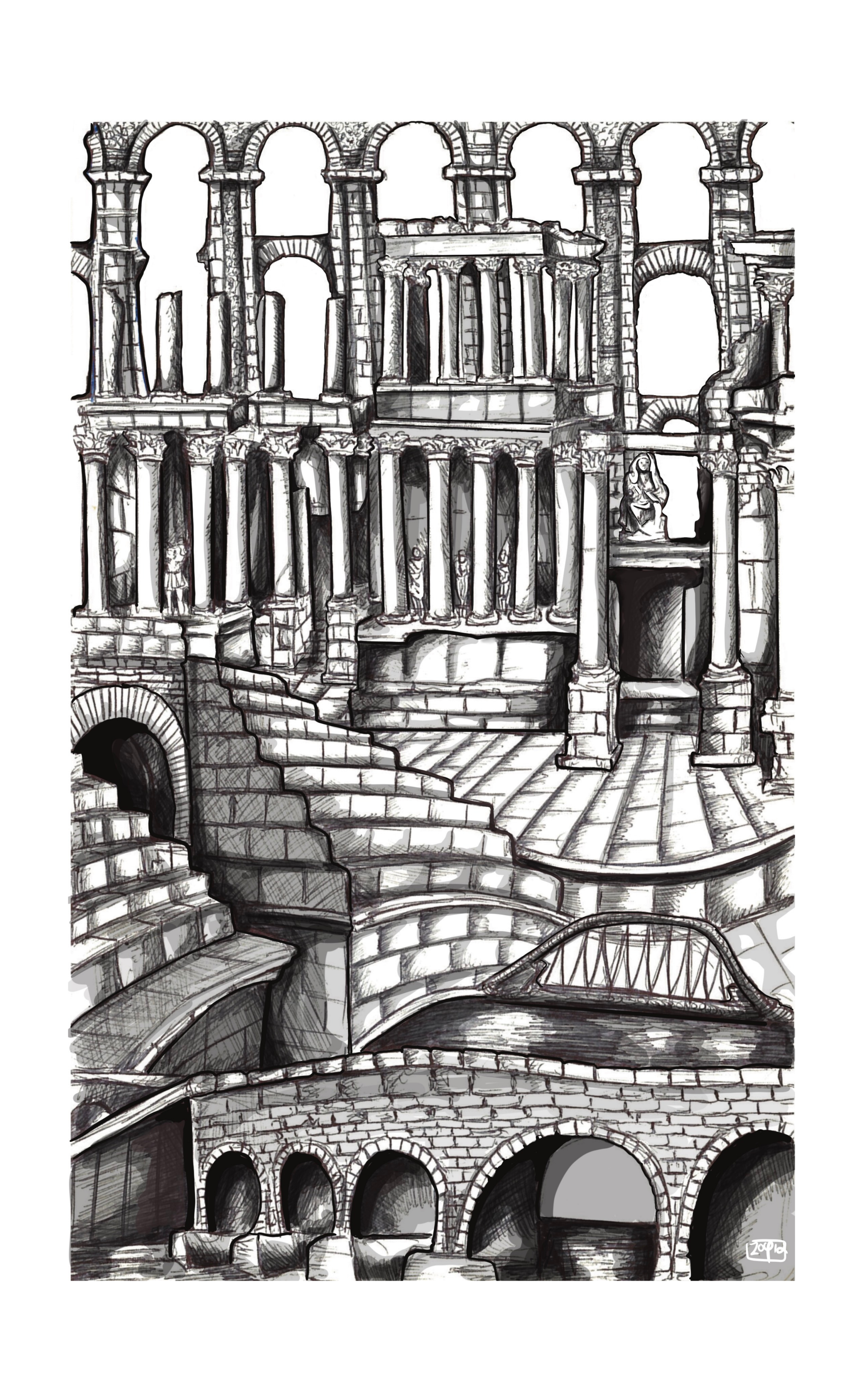
Copyright: Zofia Guertin
Copyright: Zofia Guertin
Inspired by the rich diversity of archaeological remains in Merida, Spain while on excavation, this piece illustrates the way in which an archaeologist and artist can view the layering of history in a monumental landscape creating an impression of the city's preservation of its ancient past.
Sinter, Roman aqueduct, Mérida
Sofia Greaves
Photograph, watercolour and digital print
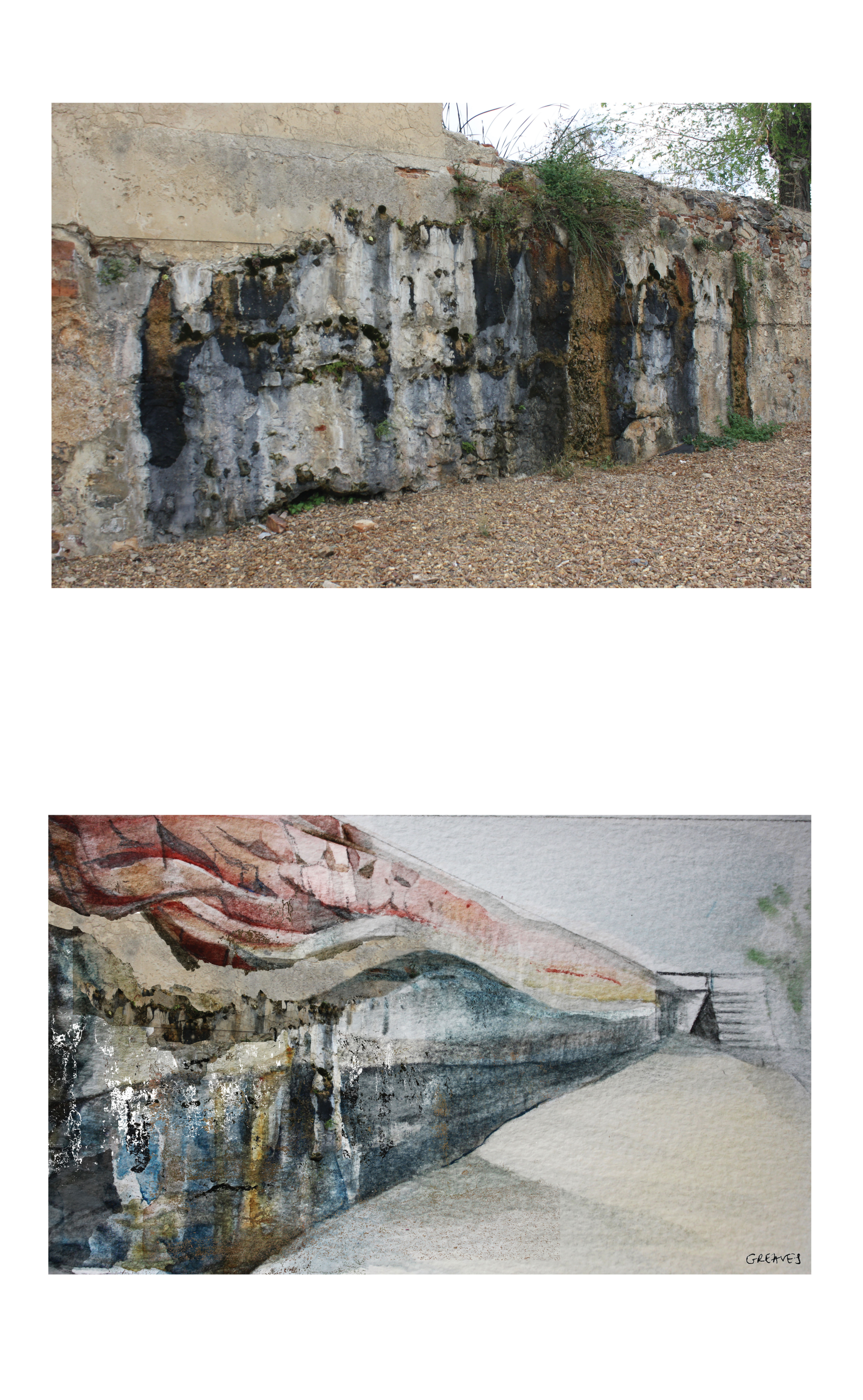
Copyright: Sofia Greaves
Copyright: Sofia Greaves
Sinter is formed when Calcium Carbonate is deposited by water, in layers, over time. This process is comparable to how watercolour painters use washes to build up an image. To create this render I painted the sinter deposits and used digital software to create layers from my painting and the photo.
Public outreach in Roman Aeclanum
The University of Edinburgh and the Apolline Project’s public outreach project at Aeclanum illustrates innovative archaeology for the public by representing an active excavation in comic art materials. Between 2017 and 2019, we created a mix of characters, games, signage, activity books, posters and short stories. This culminated in a fictional but historically and archaeologically informed graphic novella, which aim to give an image of Roman daily life: Vita Romana: at the baths of Aeclanum. It was a challenge to represent the Roman community of Aeclanum, because much of the site remains unexcavated and was heavily reused in late antiquity. To construct this Roman community we consulted comparable southern cities: Boscoreale, Herculaneum and Pompeii. We sought to represent an ethnically diverse society, including women and different religious groups.
When presenting our version of Aeclanum to the community in Mirabella, we focused on the statuary discovered in the bath complex. The graphic novel Vita Romana was produced in collaboration with specialists, whose scientific reports created a unique opportunity to integrate excavation material and 3D reconstruction work into our reconstruction of the the urban environment.
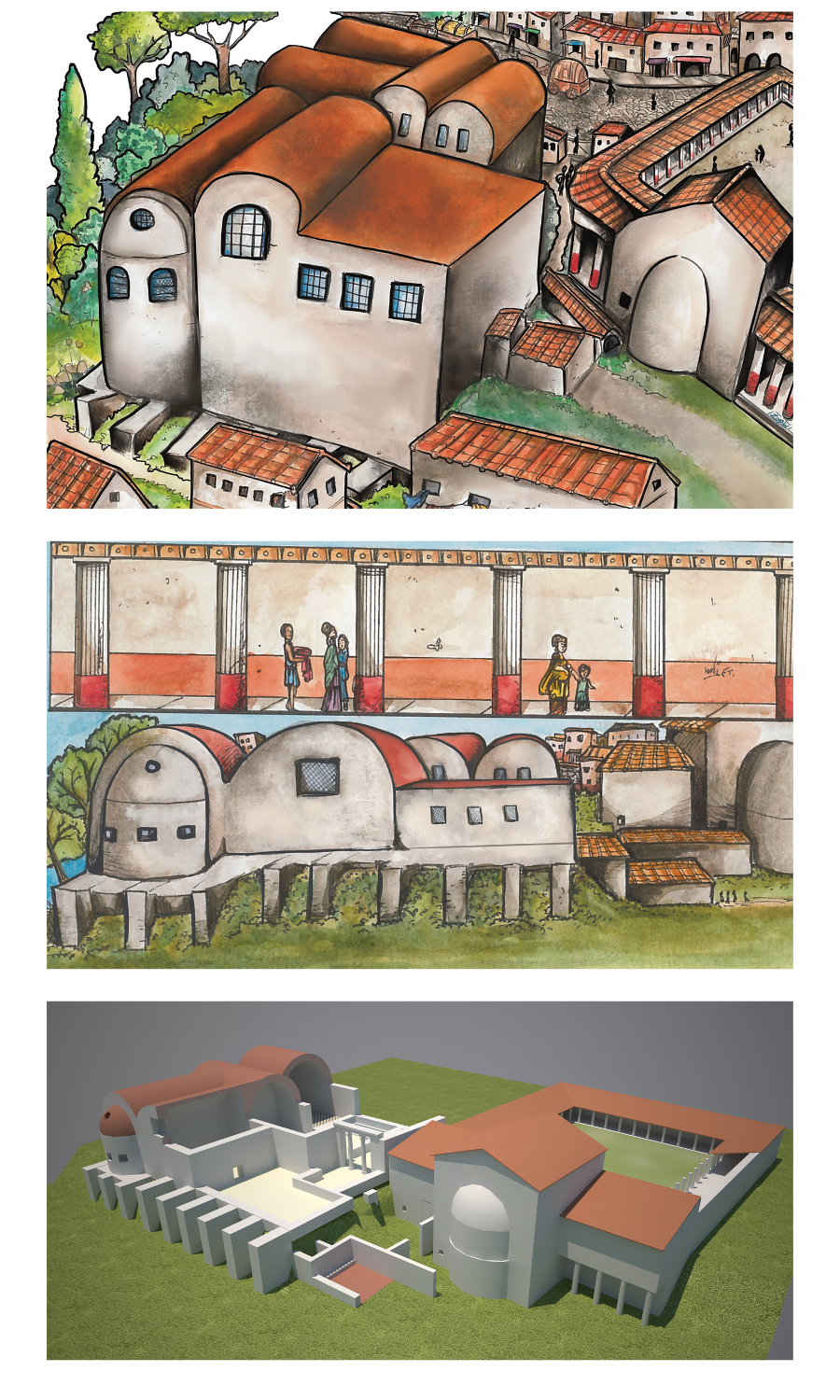
The 3D of the Aeclanum bath complex. Copyright: Created by Josef Souček, shown with permission from the University of Edinburgh and the Apolline Project.
The 3D of the Aeclanum bath complex. Copyright: Created by Josef Souček, shown with permission from the University of Edinburgh and the Apolline Project.
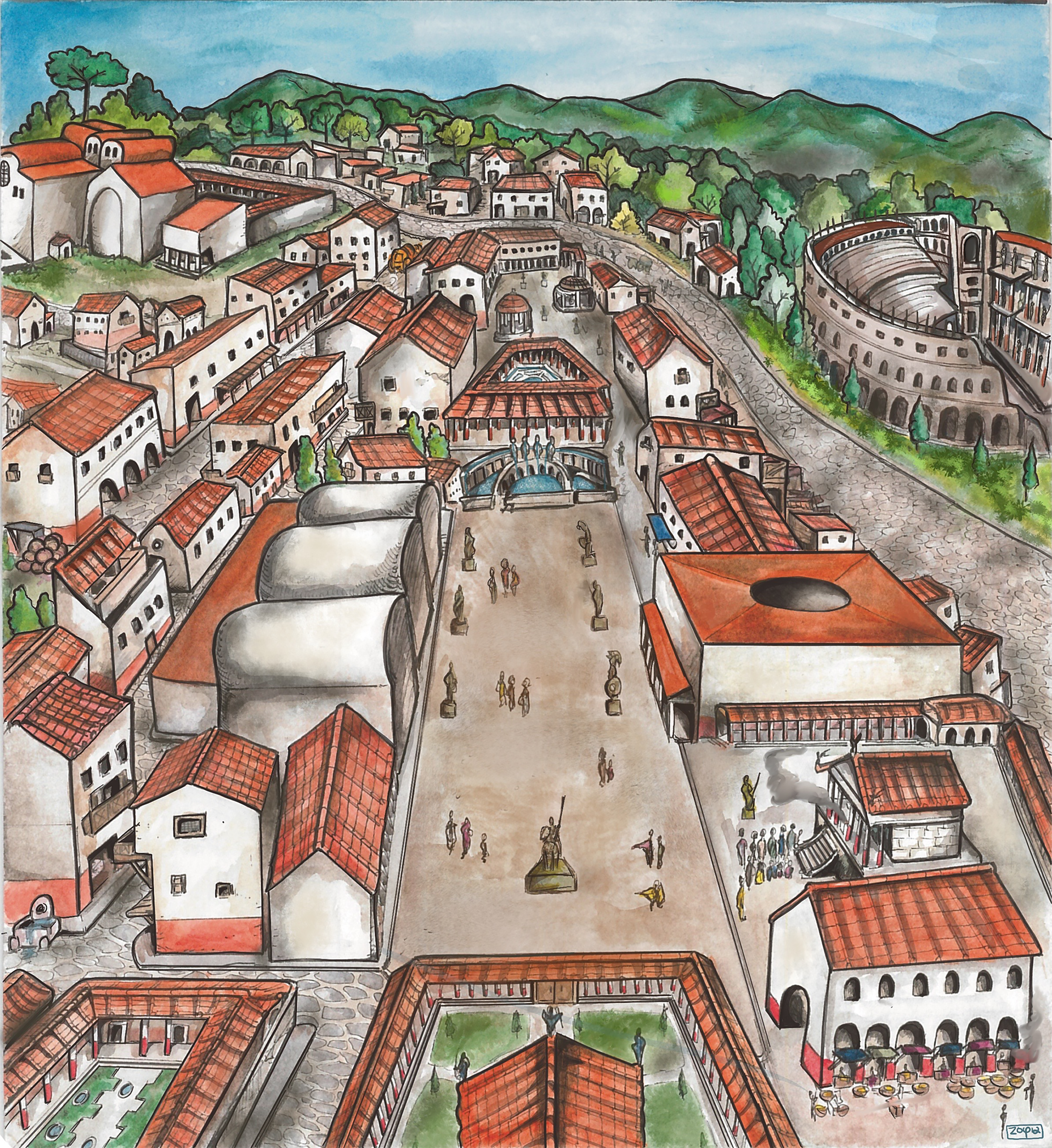
Copyright: Zofia Guertin
Copyright: Zofia Guertin
Birds' eye view of Aeclanum , 2018, p. 16.
Zofia
Guertin
Ink and watercolour
Through discussion with site directors and team archaeologists, a hypothetical image of the city of Aeclanum was created for the comic. Monumental building still visible in the site today was used as a touchstone for the image.
About Aeclanum
The archaeological site of Aeclanum lies in eastern Campania within the mountains of Hirpinia. Aeclanum was connected to other Roman cities by the construction of the Via Appia in the 290s BCE. The city received colonial status by Emperor Hadrian in 120 CE which was reflected by the increased monumental architectural and infrastructure.
Aeclanum retained its regional importance into Late Antiquity, when it became a bishopric. Natural disasters gradually led to the decline and relative obscurity of the city; an earthquake of 346 CE and eruption of Vesuvius in 472 CE were evidenced in the stratigraphy (layers) of the site. The excavations, survey and conservation work in Aeclanum under the University of Edinburgh and Apolline Project has resulted in geophysical surveys of the city centre, excavations in key public buildings and residential zones, and created a new framework for the study of the site's ceramics, marbles and ecofacts.
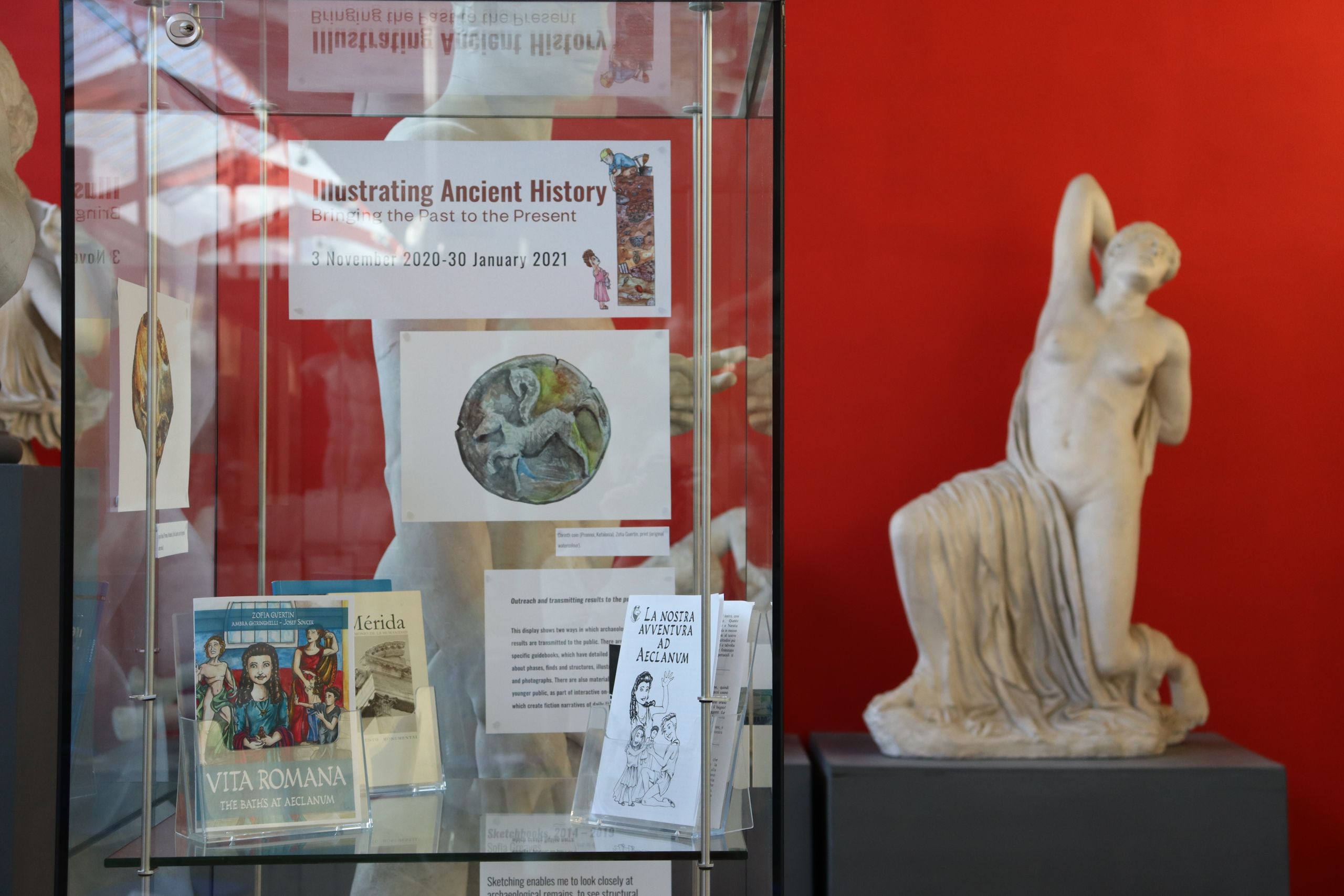

Copyright: Museum of Classical Archaeology
Copyright: Museum of Classical Archaeology
Outreach and transmitting results to the public
Archaeological remains do not belong to the archaeologists – they are simply responsible for excavating, interpreting, and preserving them for the local community. In order to transmit the information gathered during the excavations, and in order to make the remains more understandable, archaeologists have various options.
In this display we have two ways in which archaeological results are transmitted to the public. We have site-specific guidebooks, which have detailed information about phases, finds, structures, illustrated with plans and photographs. But we also have materials aimed at a younger public, part of interactive activities that take place on site, and creating fiction narratives that recreate daily life in the past.
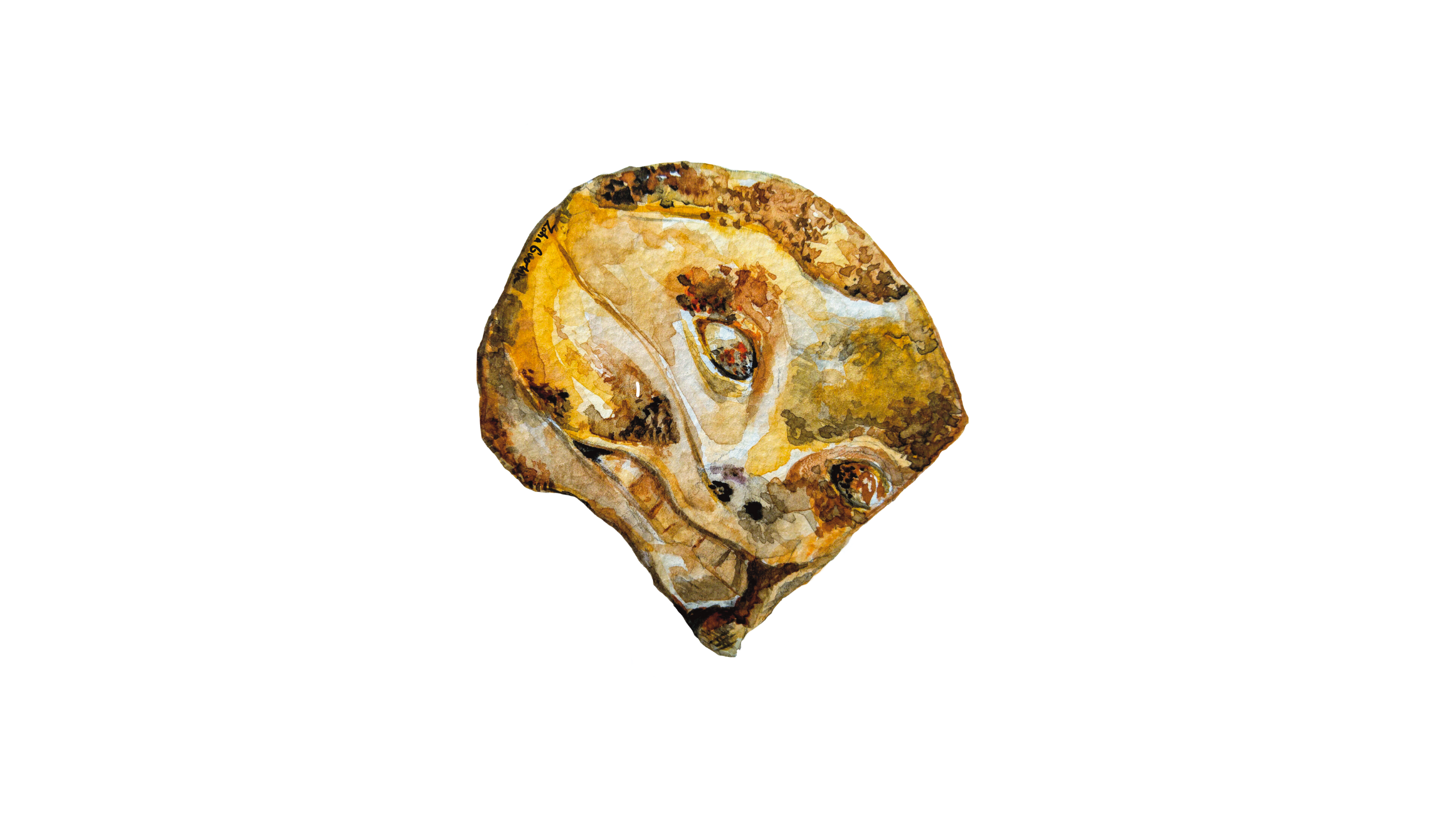
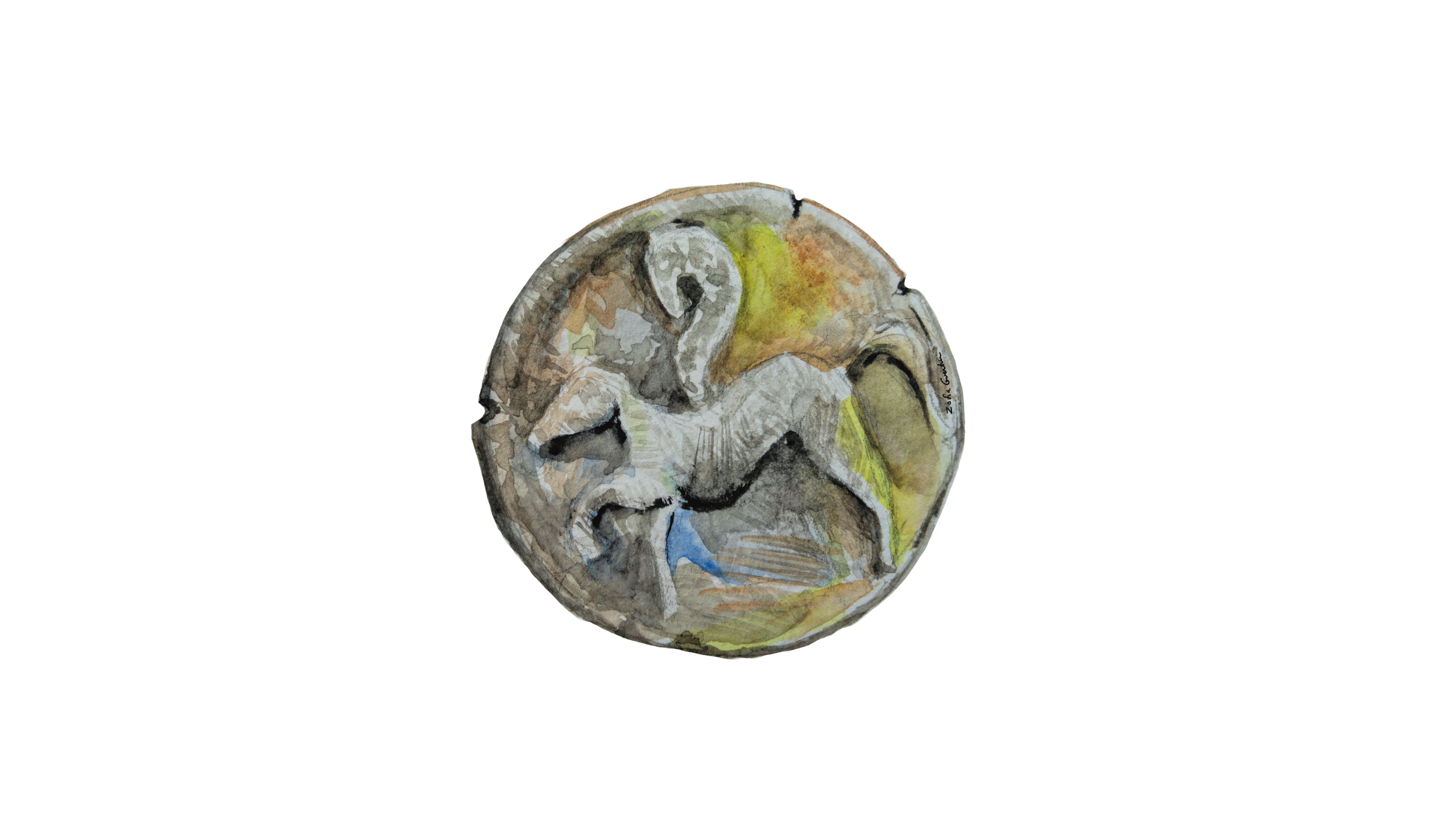

Gorgon Head (Pronnoi, Kefalonia). Print (original watercolour). Copyright: Zofia Guertin
Gorgon Head (Pronnoi, Kefalonia). Print (original watercolour). Copyright: Zofia Guertin

Corinth coin (Pronnoi, Kefalonia). Print (original watercolour). Copyright: Zofia Guertin
Corinth coin (Pronnoi, Kefalonia). Print (original watercolour). Copyright: Zofia Guertin
Vita Romana: at the Baths of Aeclanum, 2019, p. 11
Zofia
Guertin
Ink, watercolour painting, and digital rendering
This page depicts the home of Neratia Prima, the main protagonist of the narrative, interacting in a wealthy domestic space in the second century CE. The details in this scene, necessary for communicating daily life in a Roman community, were influenced by archaeological excavations in Pompeii and Herculaneum and museum collections in Campania.
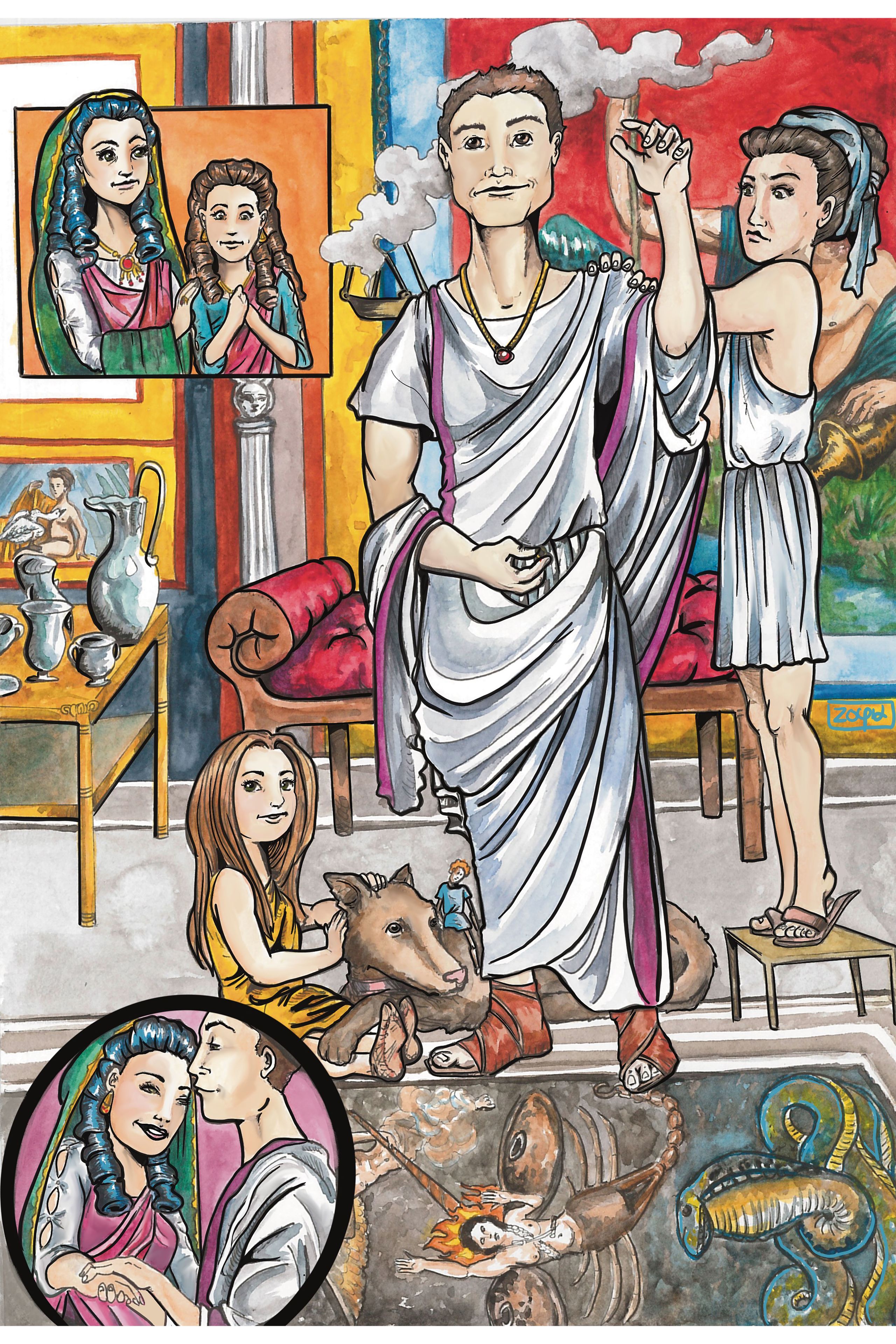
Copyright: Zofia Guertin
Copyright: Zofia Guertin
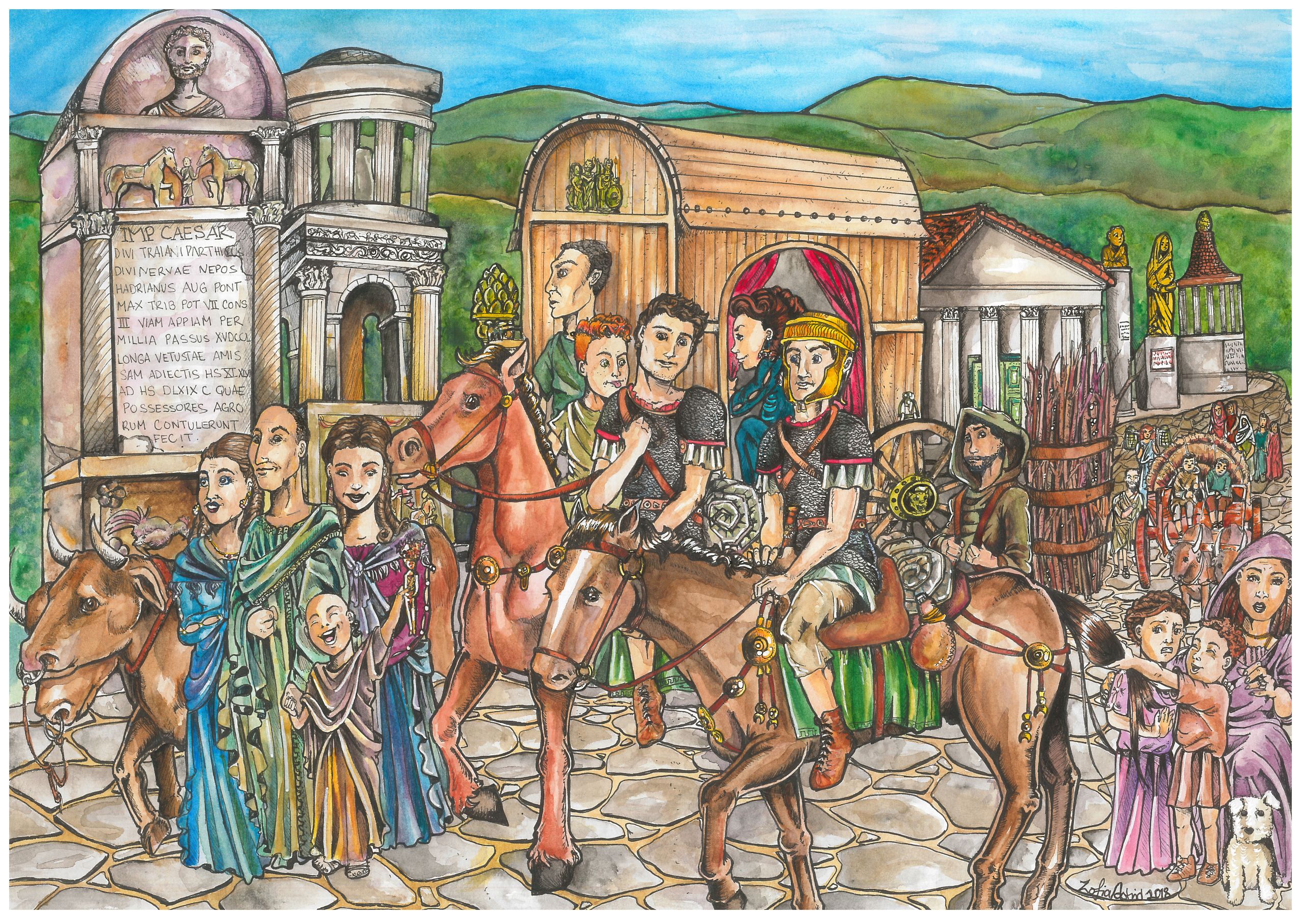
Copyright: Zofia Guertin
Copyright: Zofia Guertin
Life Along the Via Appia , 2018
Zofia
Guertin
Ink and watercolour
Part of Aeclanum’s significance in the region was due to its prominent position on the Via Appia , a main road which connected cities in the southern interior of Italy. This image presents the multi cultural and religiously diverse communities present in Aeclanum during the Imperial period.

Copyright: Zofia Guertin
Copyright: Zofia Guertin
Open Day at Aeclanum , 2019
Zofia
Guertin
Ink, watercolour, and digital rendering
The annual Open Day showcased our evolving public outreach approaches. With each excavation season the activities for site visitors (youth passports to archaeology, games and hands on learning) have continued to grow and build.
The Palm and the Crocodile of Nîmes: the Past Relevant in the Present
The city of Nîmes, in southern France, was a Roman colonial foundation of the late Republic. During the reign of Augustus and later, the city council minted these low denomination coins with a palm tree and a crocodile, to commemorate the conquest of Egypt.
In 1535, these coins were discovered during some construction works, and king Francis I (1515-1547) changed the city’s old medieval crest for a new one with the palm and the crocodile.
Ever since, the crocodile and the palm, the reminders of the city’s Roman origins, have become the symbols of Nîmes, appearing everywhere from street bollards to monuments, stuffed toys, t-shirts, mosaics in the covered market, and the crest of the local football team.
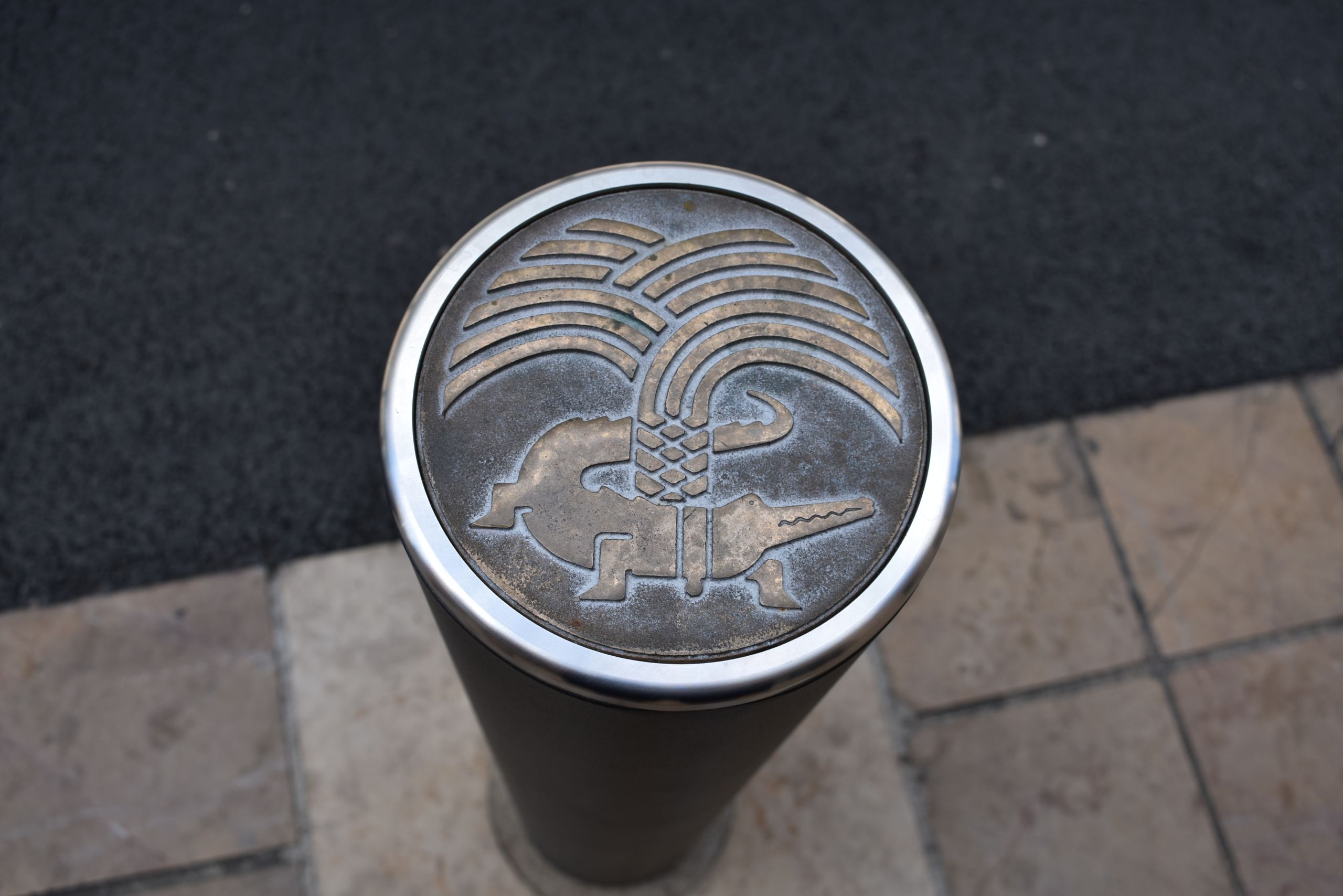
Bollard, Nîmes, Copyright. Javier Martínez
Bollard, Nîmes, Copyright. Javier Martínez
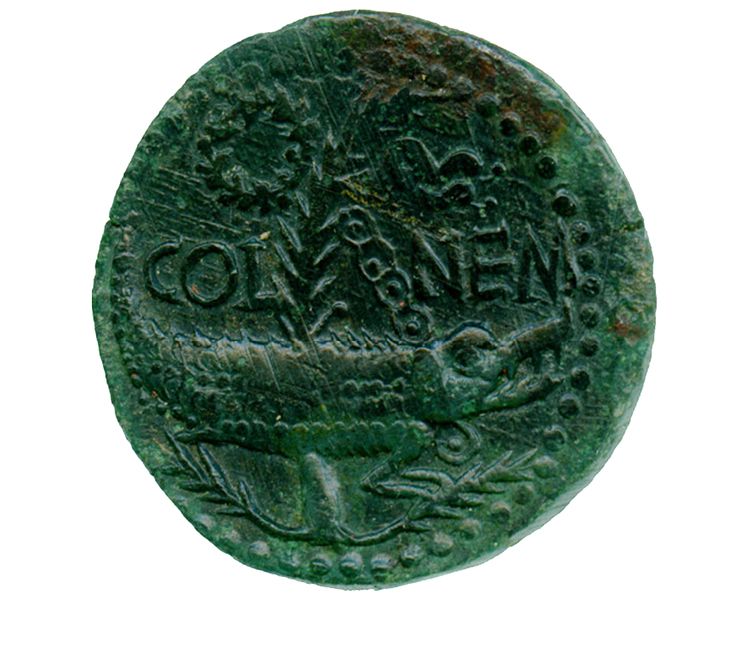
CM.69-1948 Coin issued at Nemausus during the reign of Augustus (27BC - AD 14). Copyright: The Fitzwilliam Museum.
CM.69-1948 Coin issued at Nemausus during the reign of Augustus (27BC - AD 14). Copyright: The Fitzwilliam Museum.
The Palm and the Crocodile of Nîmes: the Past Relevant in the Present
The city of Nîmes, in southern France, was a Roman colonial foundation of the late Republic. During the reign of Augustus and later, the city council minted these low denomination coins with a palm tree and a crocodile, to commemorate the conquest of Egypt.
In 1535, these coins were discovered during some construction works, and king Francis I (1515-1547) changed the city’s old medieval crest for a new one with the palm and the crocodile.
Ever since, the crocodile and the palm, the reminders of the city’s Roman origins, have become the symbols of Nîmes, appearing everywhere from street bollards to monuments, stuffed toys, t-shirts, mosaics in the covered market, and the crest of the local football team.

Bollard, Nîmes, Copyright. Javier Martínez
Bollard, Nîmes, Copyright. Javier Martínez

Coin issued at Nemausus during the reign of Augustus (27BC - AD 14), dupondius, copper alloy. Copyright: Fitzwilliam Museum
Coin issued at Nemausus during the reign of Augustus (27BC - AD 14), dupondius, copper alloy. Copyright: Fitzwilliam Museum
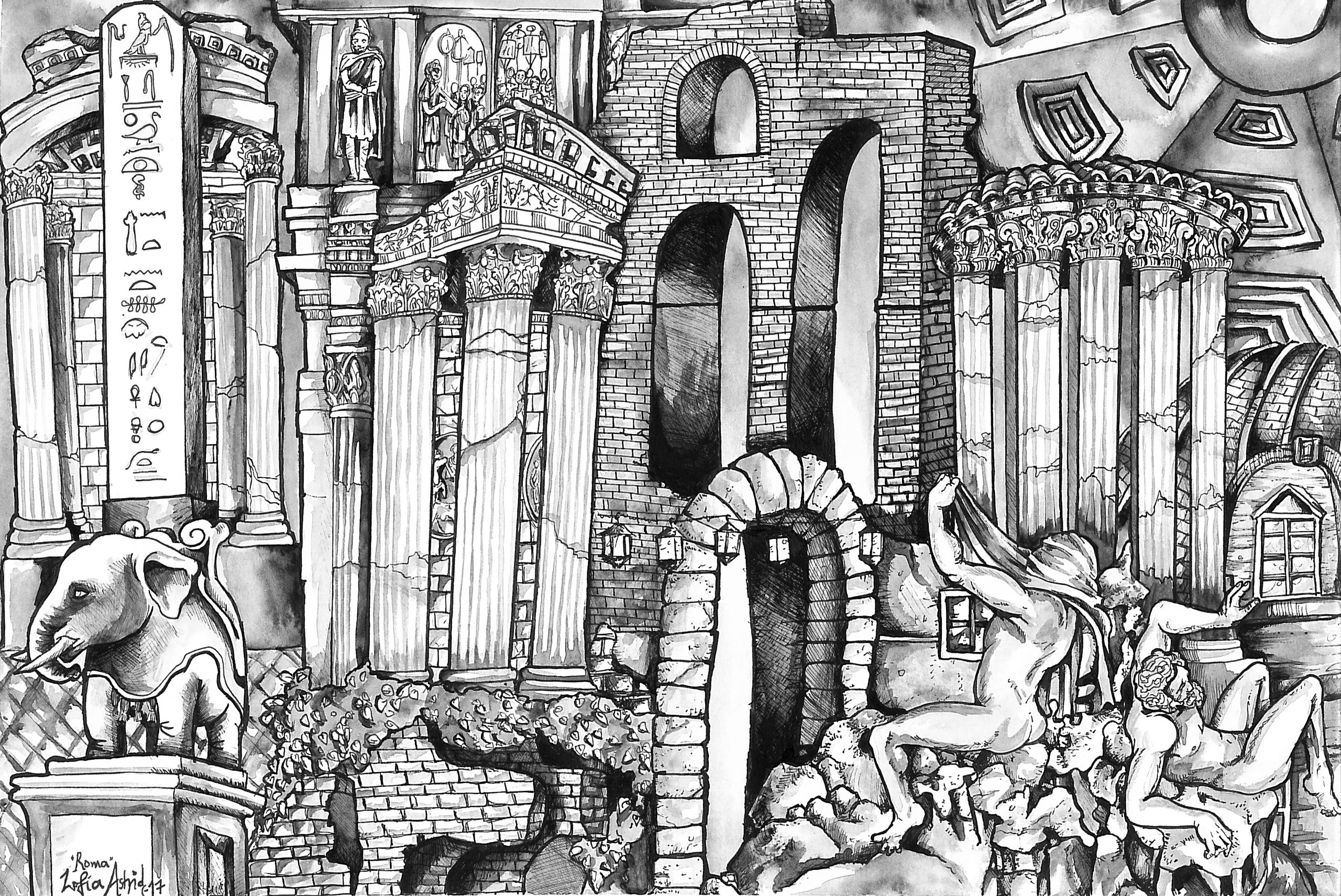
Copyright: Zofia Guertin
Copyright: Zofia Guertin
Roma: Brick and Marble, 2018
Zofia
Guertin
Ink and acrylic paint
Through fieldwork and exploration, the monumentality of ancient Rome loomed and inspired my art through the crashing together of the materiality of Rome's historical periods. Rome's architectural landscape is a process of creation, destruction and re imagination. This piece draws together the way experiencing the exposed building material and city space connects our modern imagining of antiquity.
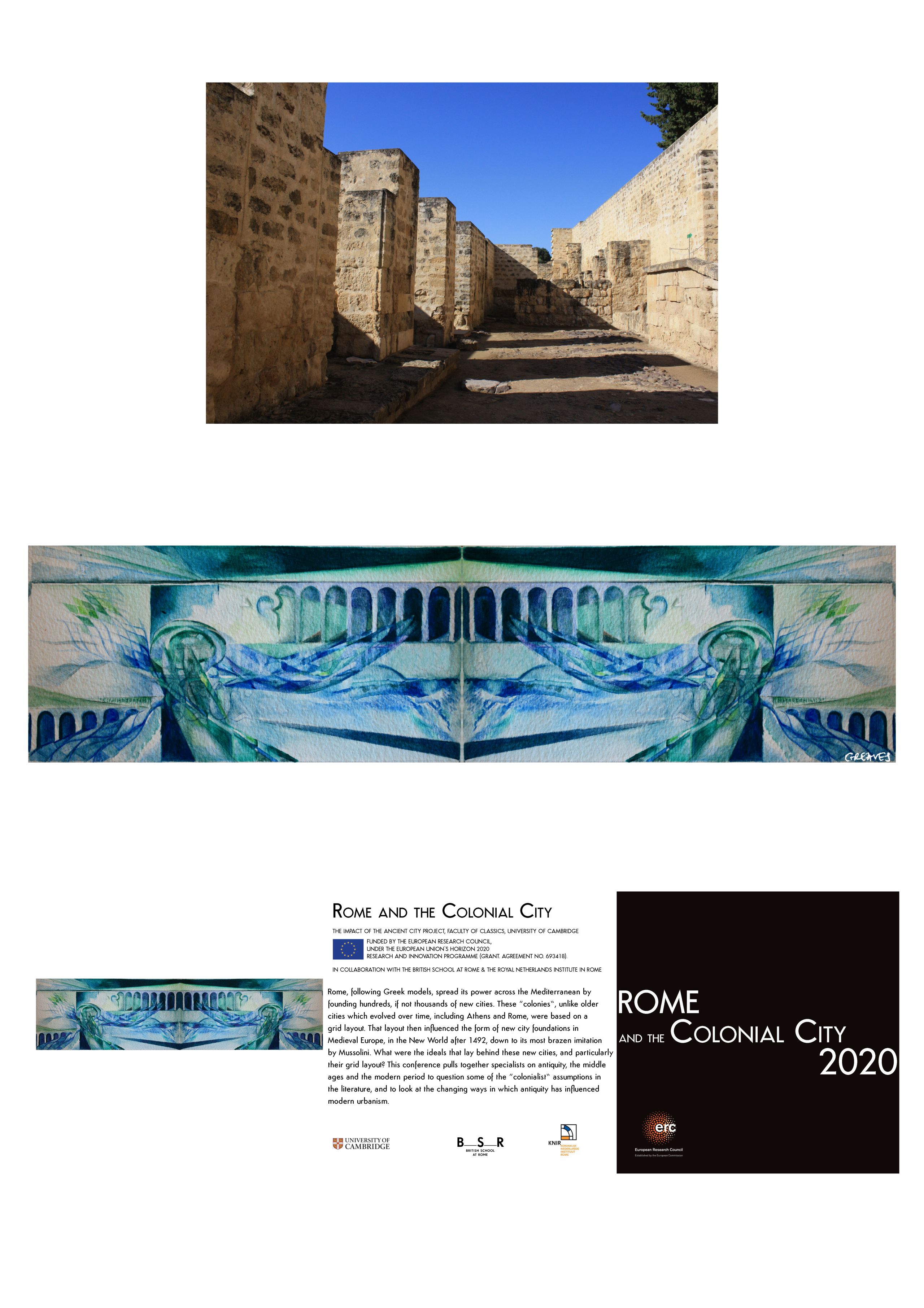

Conference leaflet, Copyright: Sofia Greaves.
Conference leaflet, Copyright: Sofia Greaves.
Madīnat al Zahrā , 2019
Sofia Greaves
Photograph, watercolour, conference leaflet
The drawings for the ‘Rome and the Colonial City Conference’ are based on fieldwork at this Umayyad city. The conference was organized by the ‘Impact of the Ancient City Project’ to question colonialist assumptions about the ancient ‘grid city’ and its impact.
The Impact of the Ancient City
This exhibition is part of a research project in the Faculty of Classics, Cambridge University called the Impact of the Ancient City Project, led by Prof. Andrew Wallace-Hadrill. The project has received funding from the European Research Council (ERC) under the European Union's Horizon 2020 research and innovation programme (grant agreement n° 693418).
This exhibition was curated by Javier Martínez Jiménez
The Aeclanum Project
The Aeclanum Project led University of Edinburgh led by Dr Ben Russell (Faculty of History, Classics and Archaeology) and the Director of the Apolline Project, Dr Girolamo F. de Simone. The project has received funding from the Roman Society and Roman Research Trust, a Munro Research Grant and the Challenge Investment Fund of the University of Edinburgh, the British School at Rome and the Institute of Classica I Studies. Our thanks to the Comune di Mirabella Eclano, the Soprintendenza per le province di Salerno ed Avellino, the Accademia di Belle Arti di Napoli for their support.
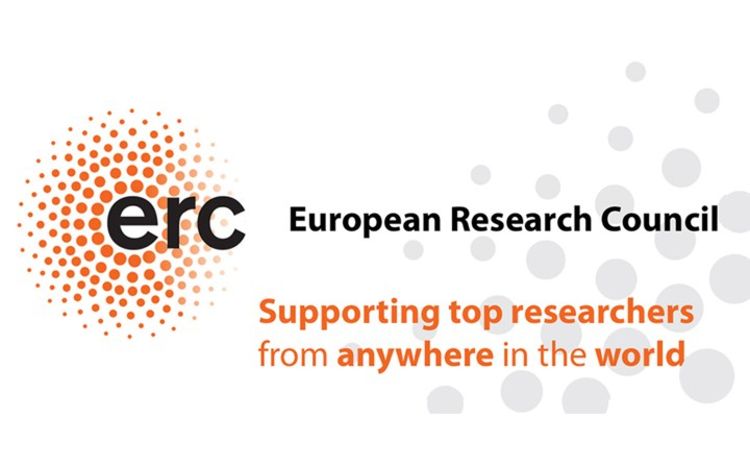
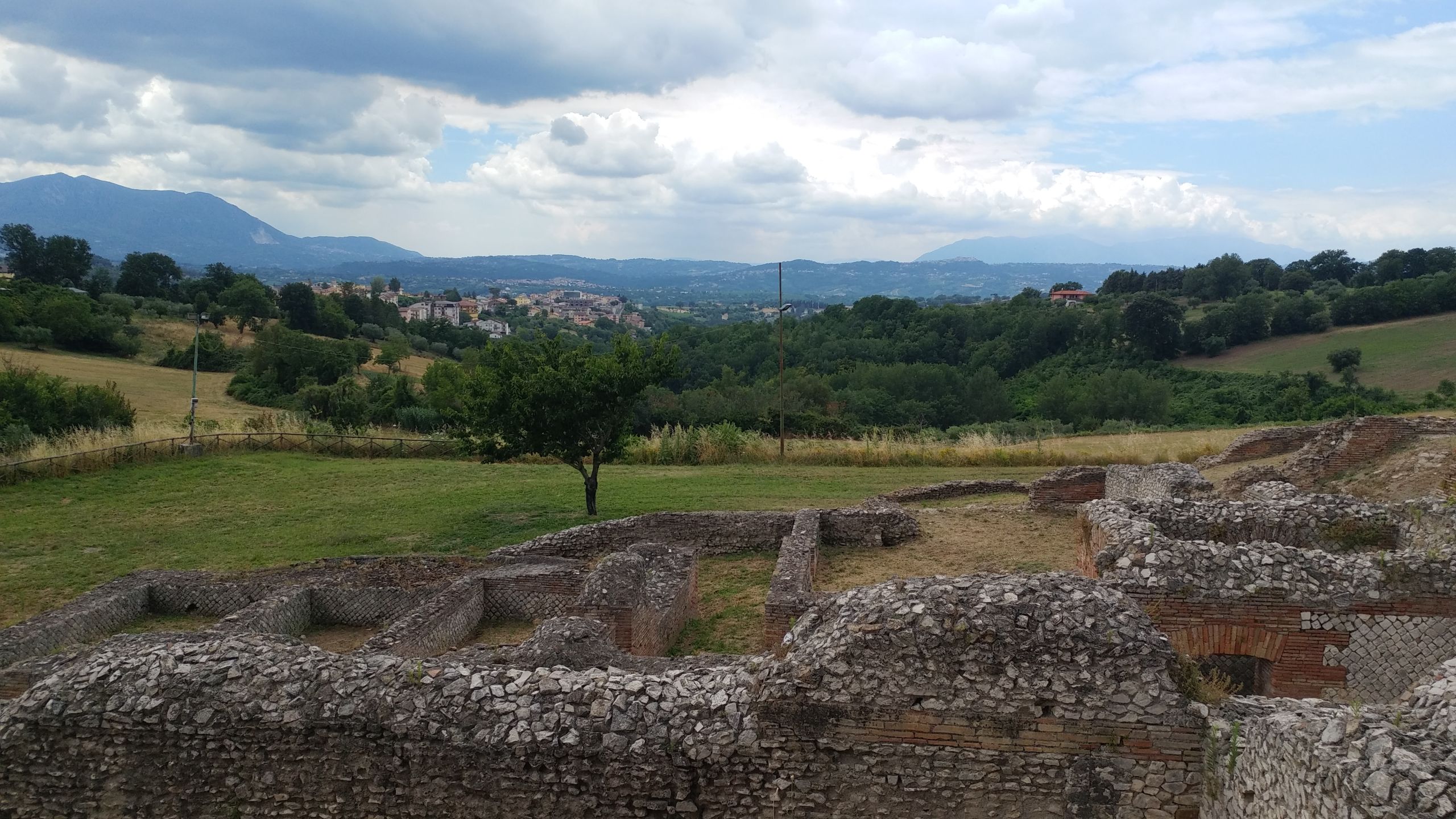
Bath Complex, Aeclanum. Copyright: Zofia Guertin
Bath Complex, Aeclanum. Copyright: Zofia Guertin
We want to hear from you!
There are many ways to explore and experience archaeology through art. We would like to hear about your experiences!
Please take a moment to fill in a brief online survey about your experiences with archaeological sites and illustrations.
Want to find out more?
The Impact of the Ancient City:
https://impanccit.wixsite.com/impanccit
The Aeclanum Project:
https://www.ed.ac.uk/history-classics-archaeology/classics/research/research-projects/aeclanum
Zofia Guertin
www.archaeoartist.com
Sofia Greaves
https://sofiagreaves.wixsite.com/sofiagreaves
The Exhibition in the Museum of Classical Archaeology Cast Gallery
